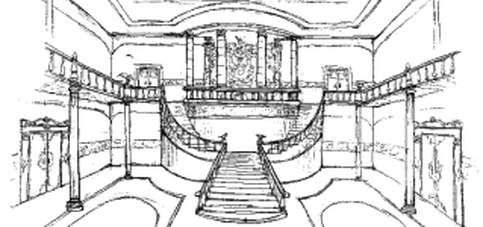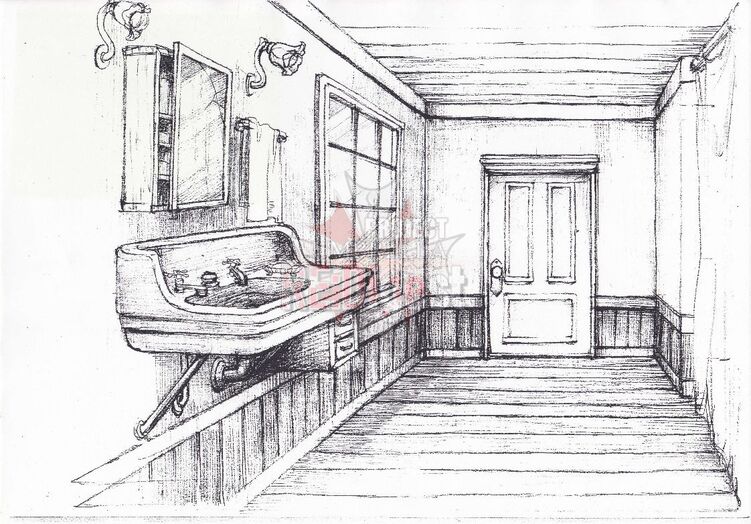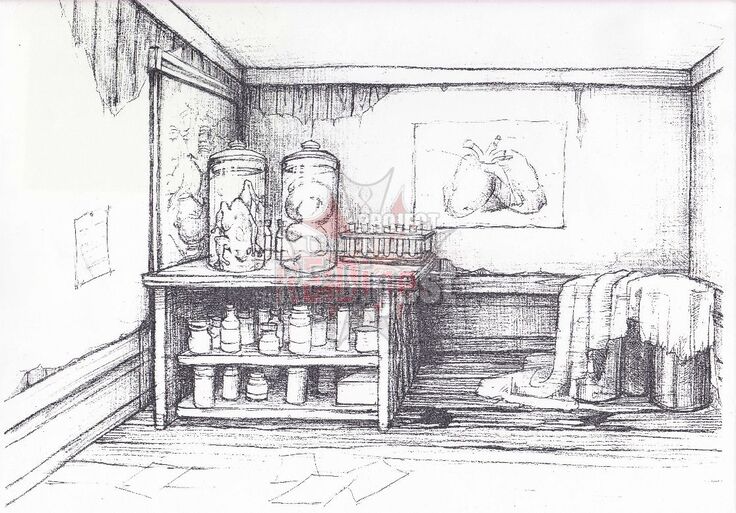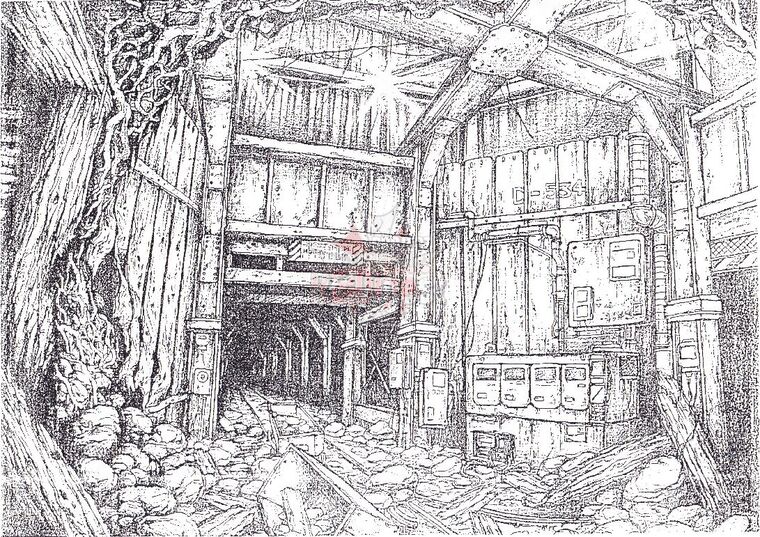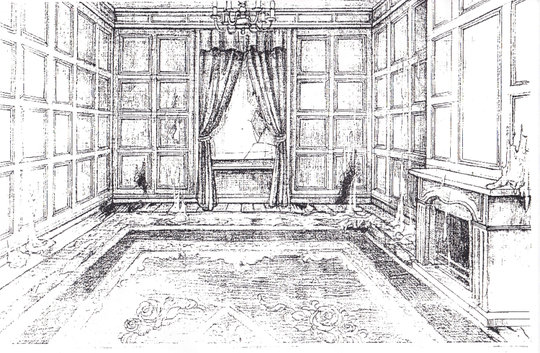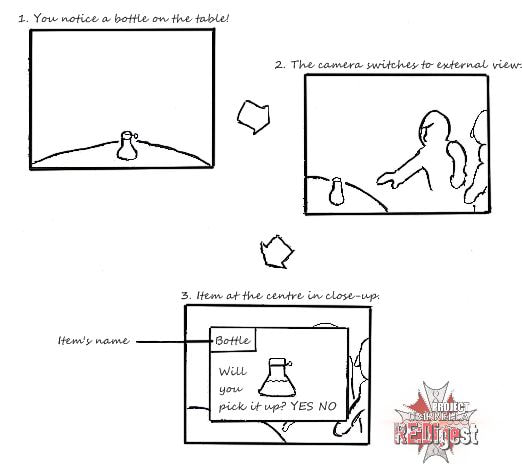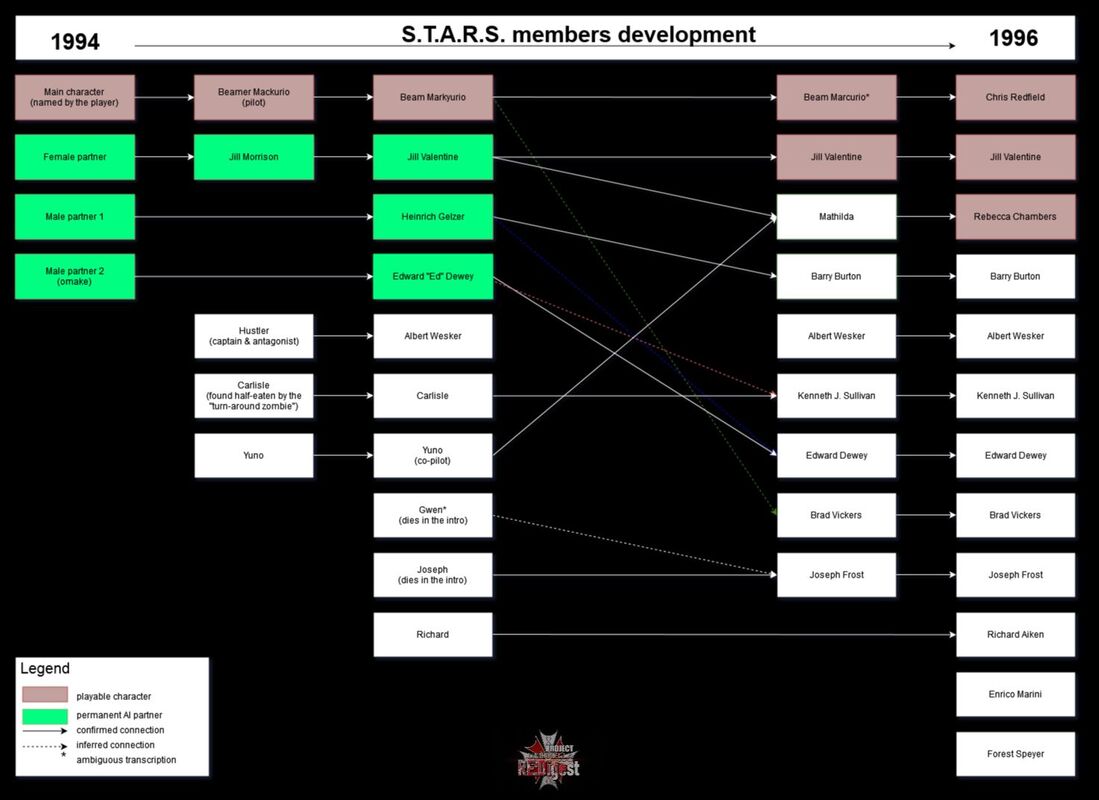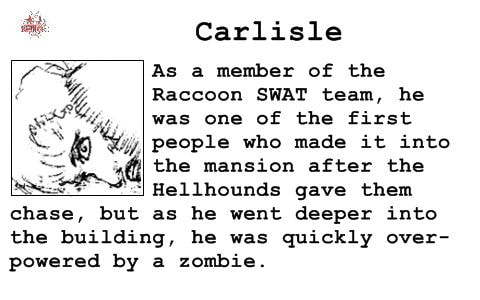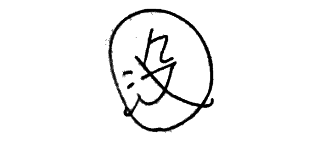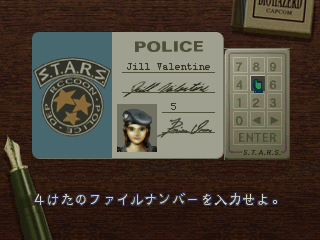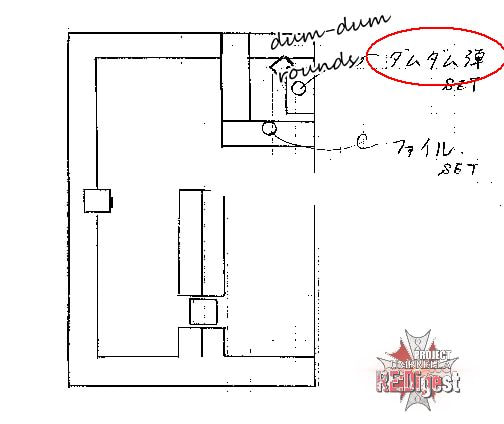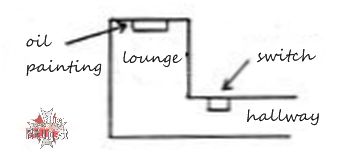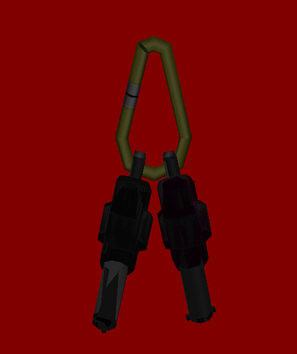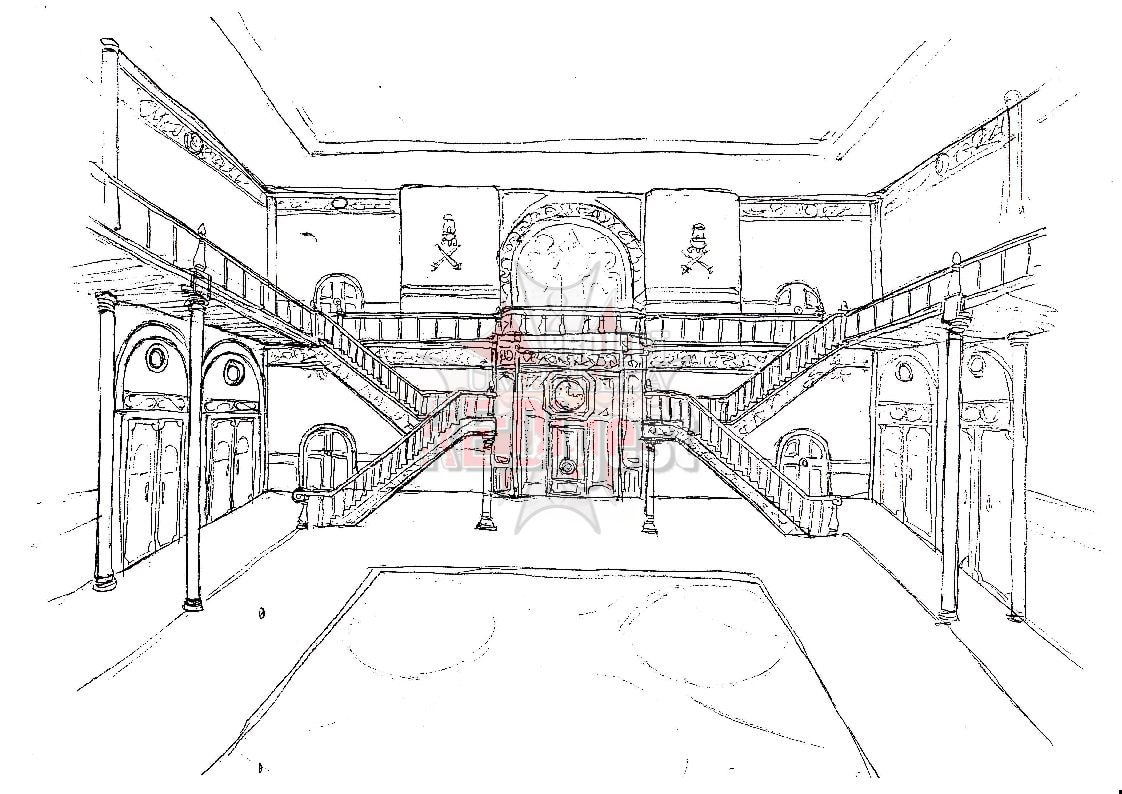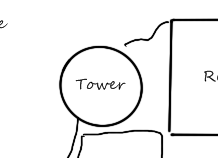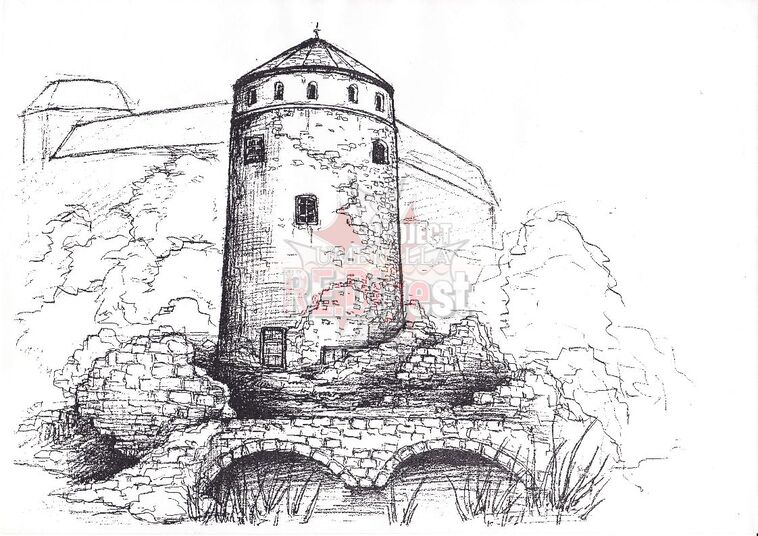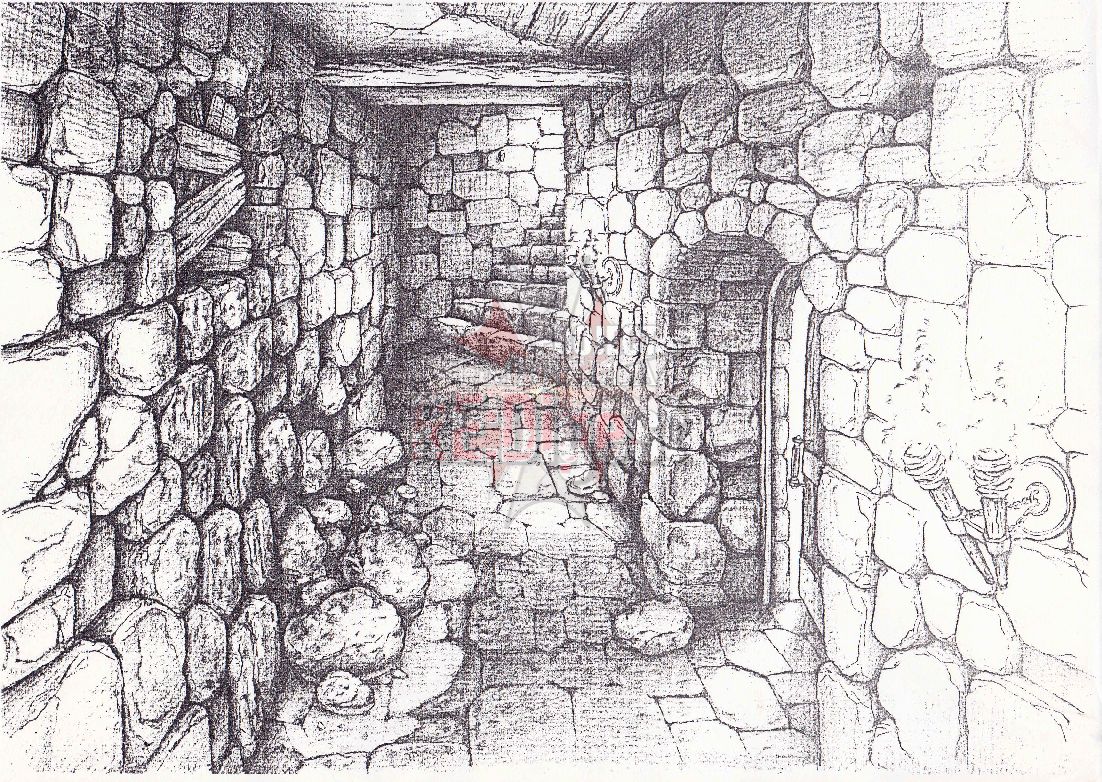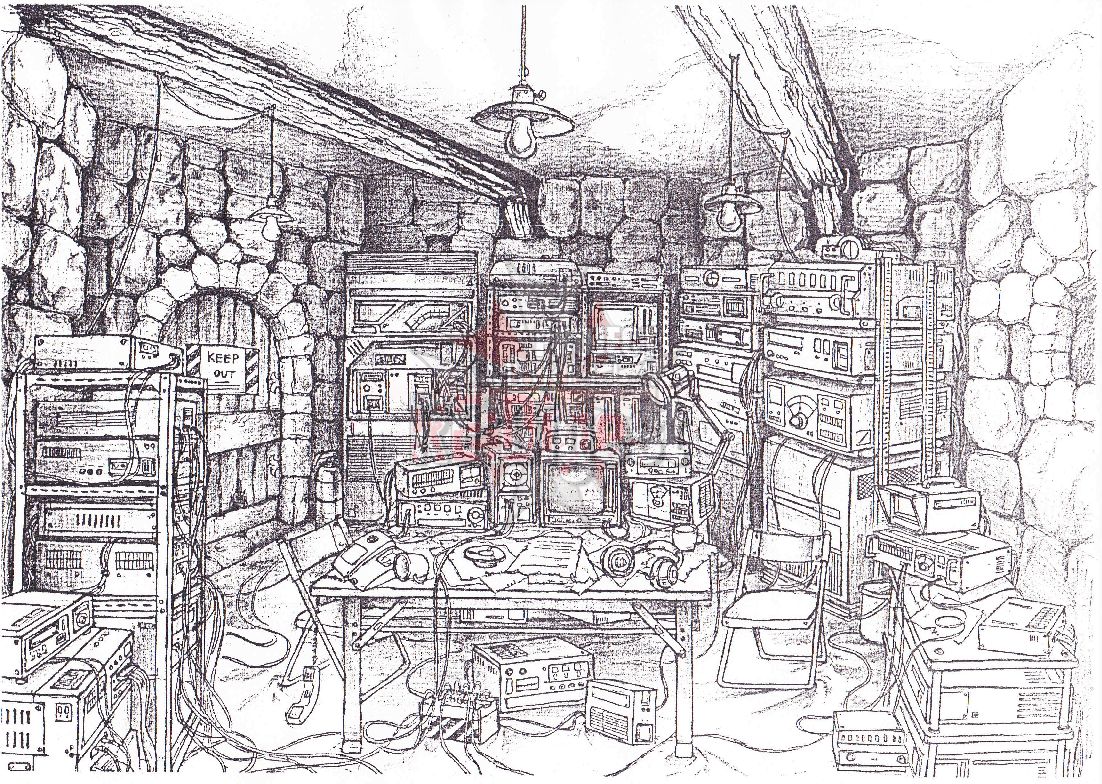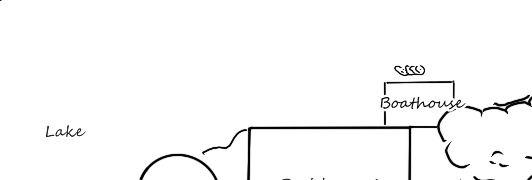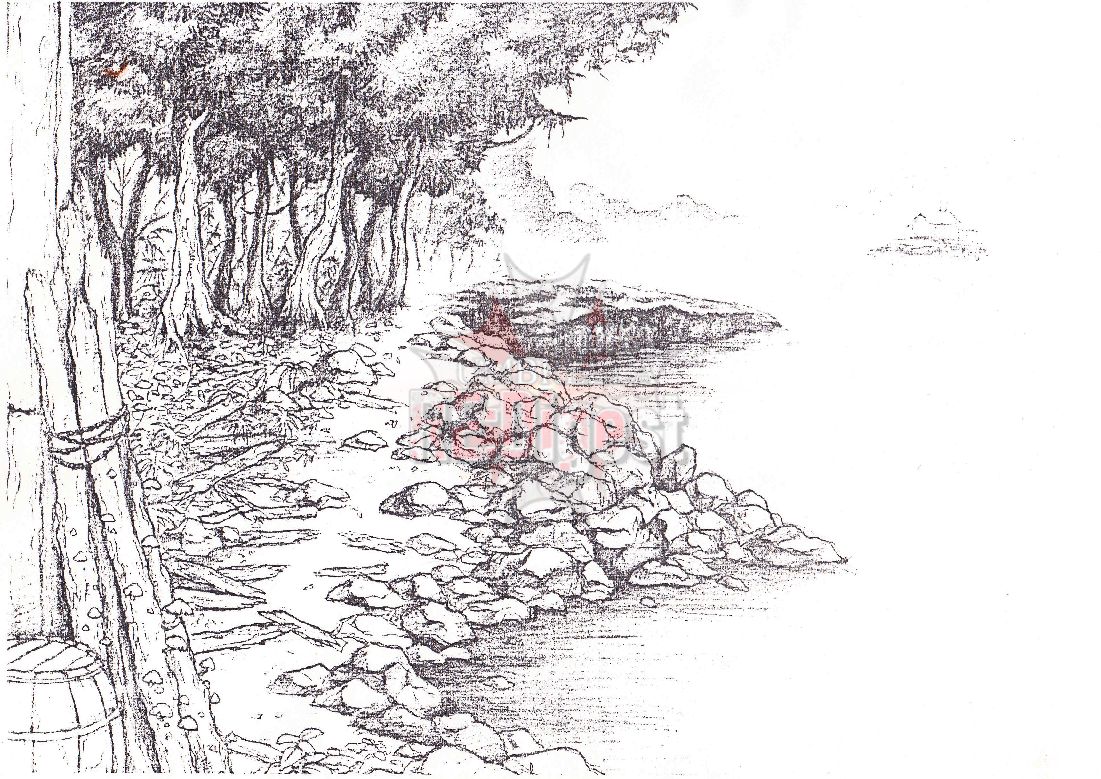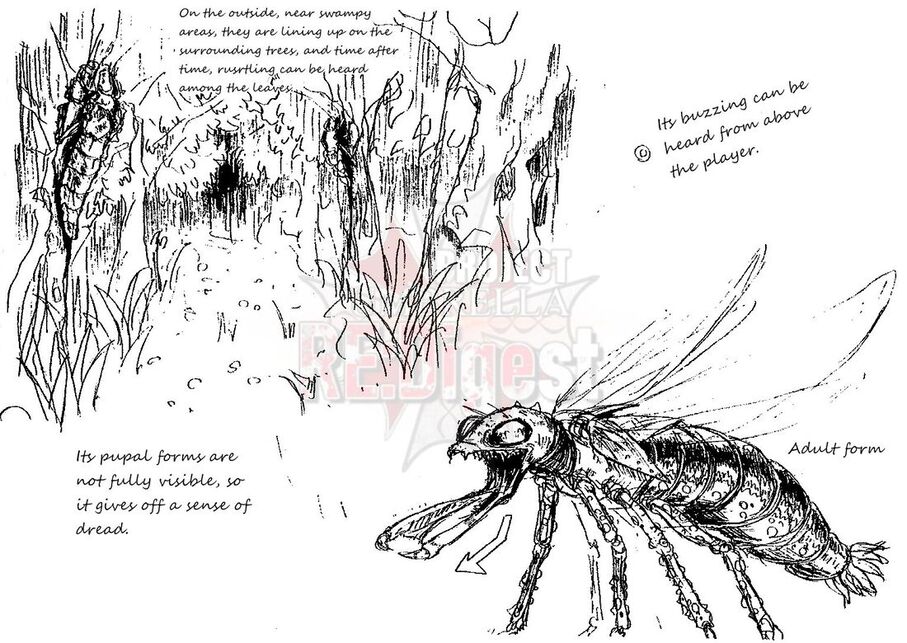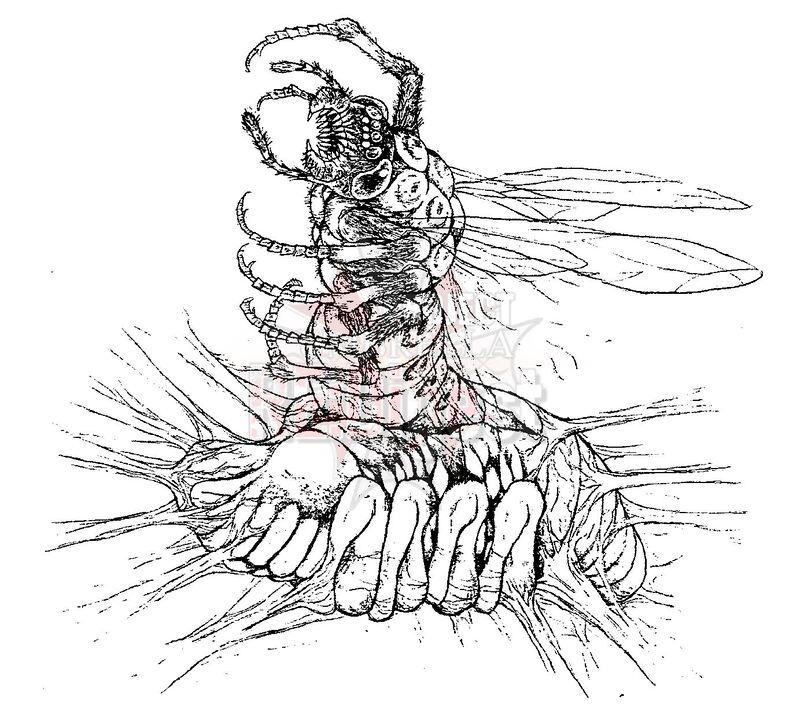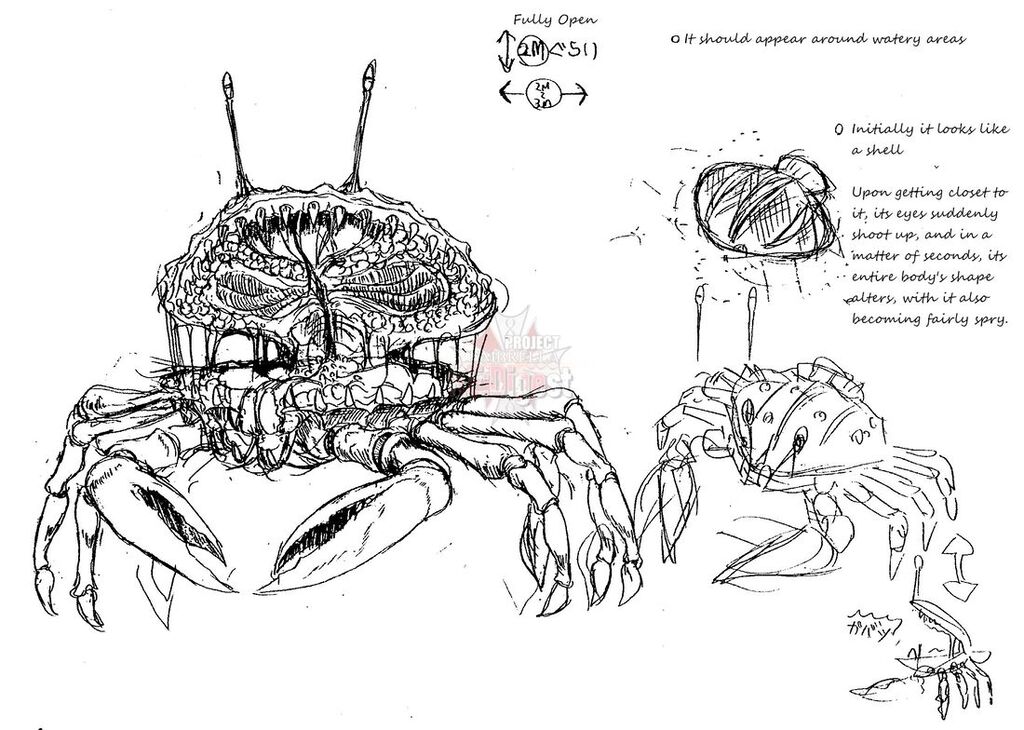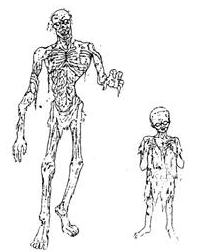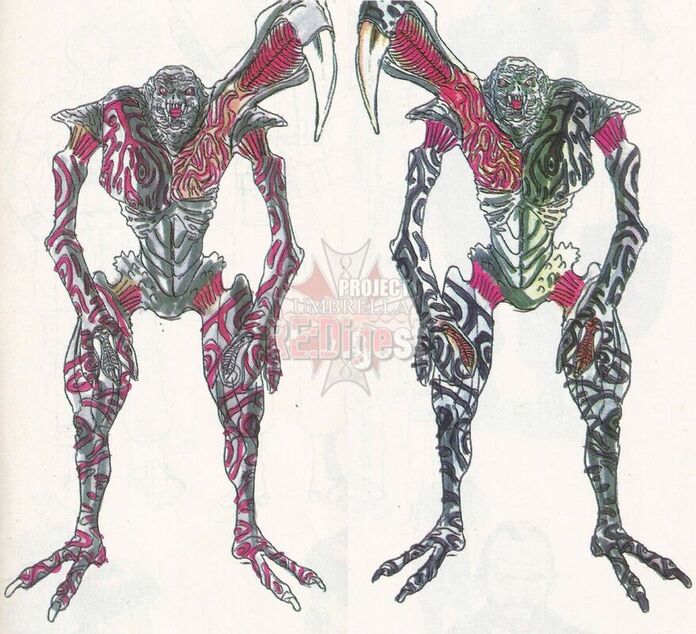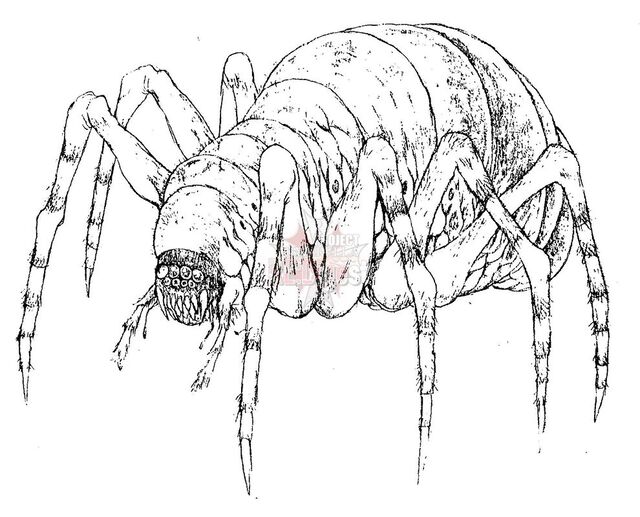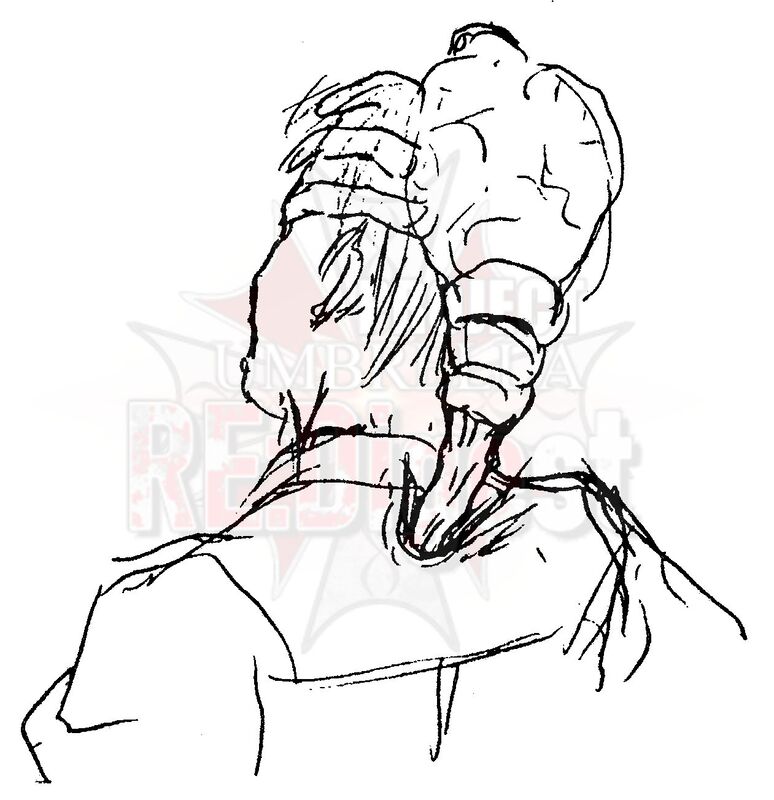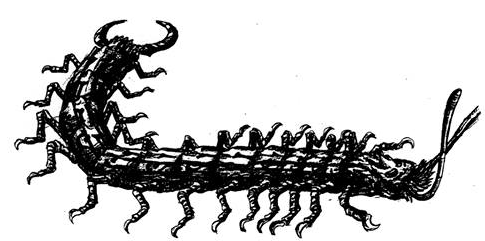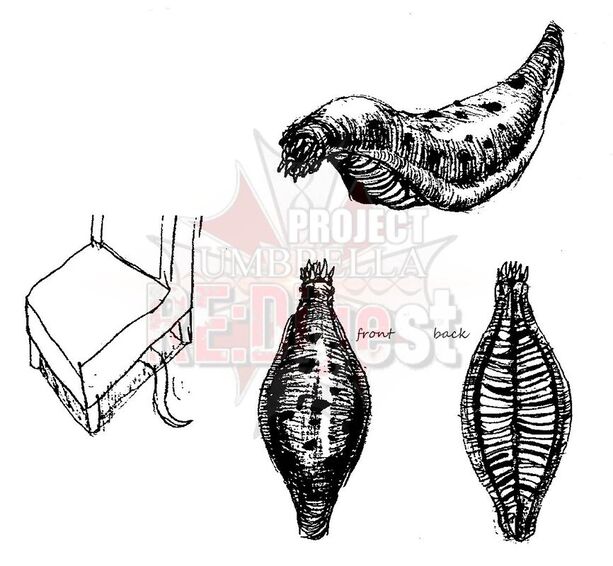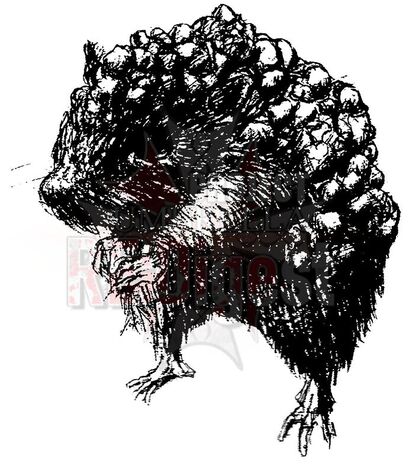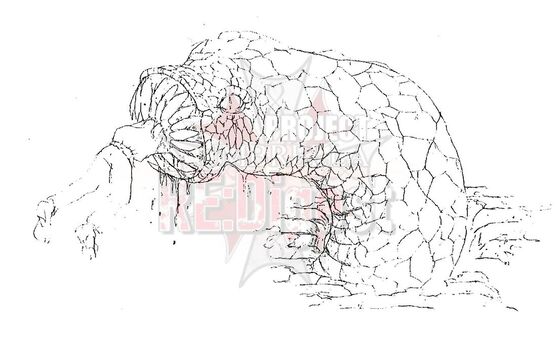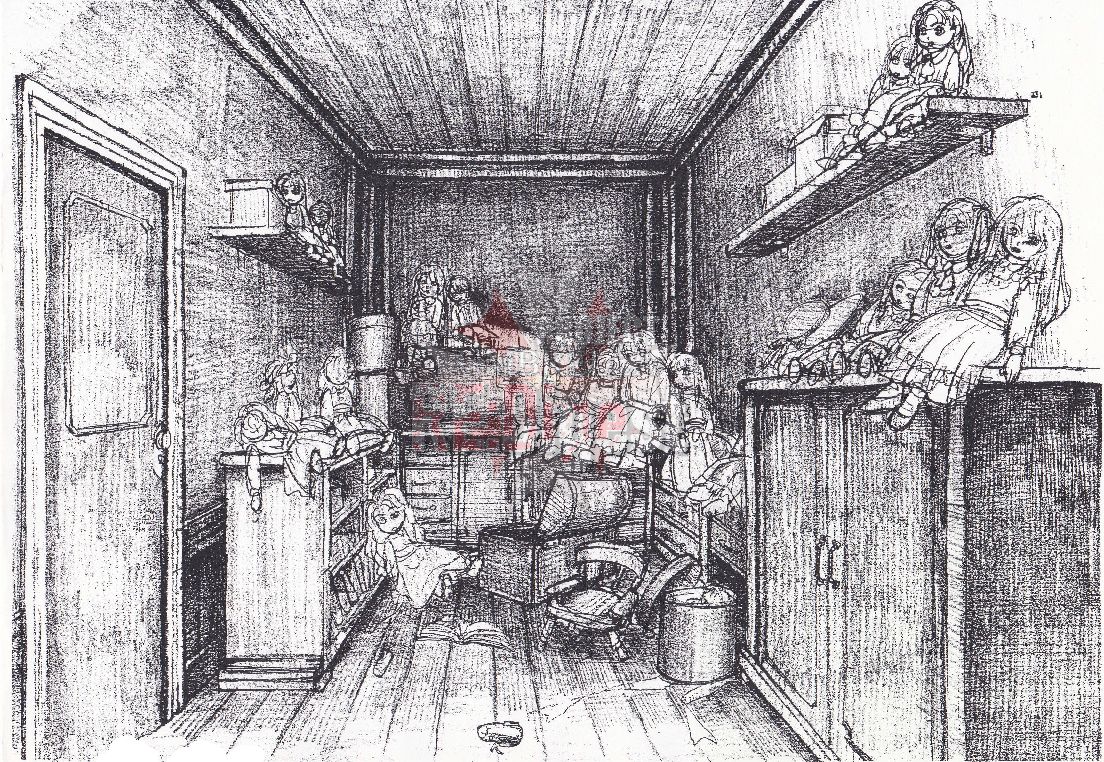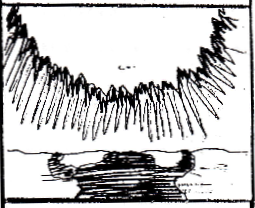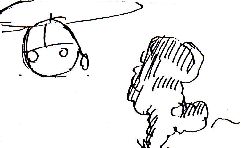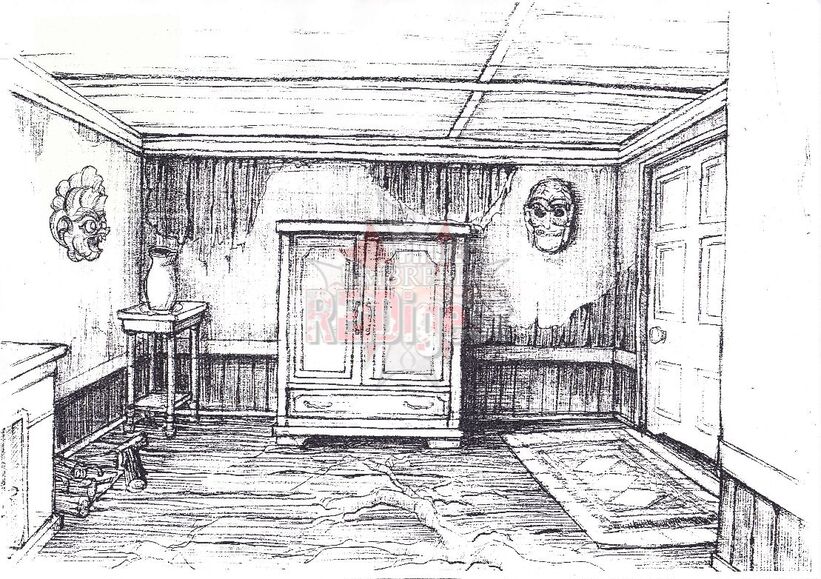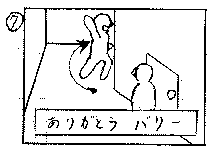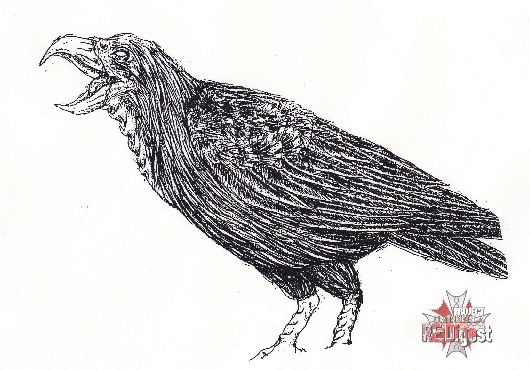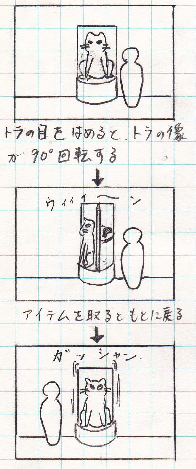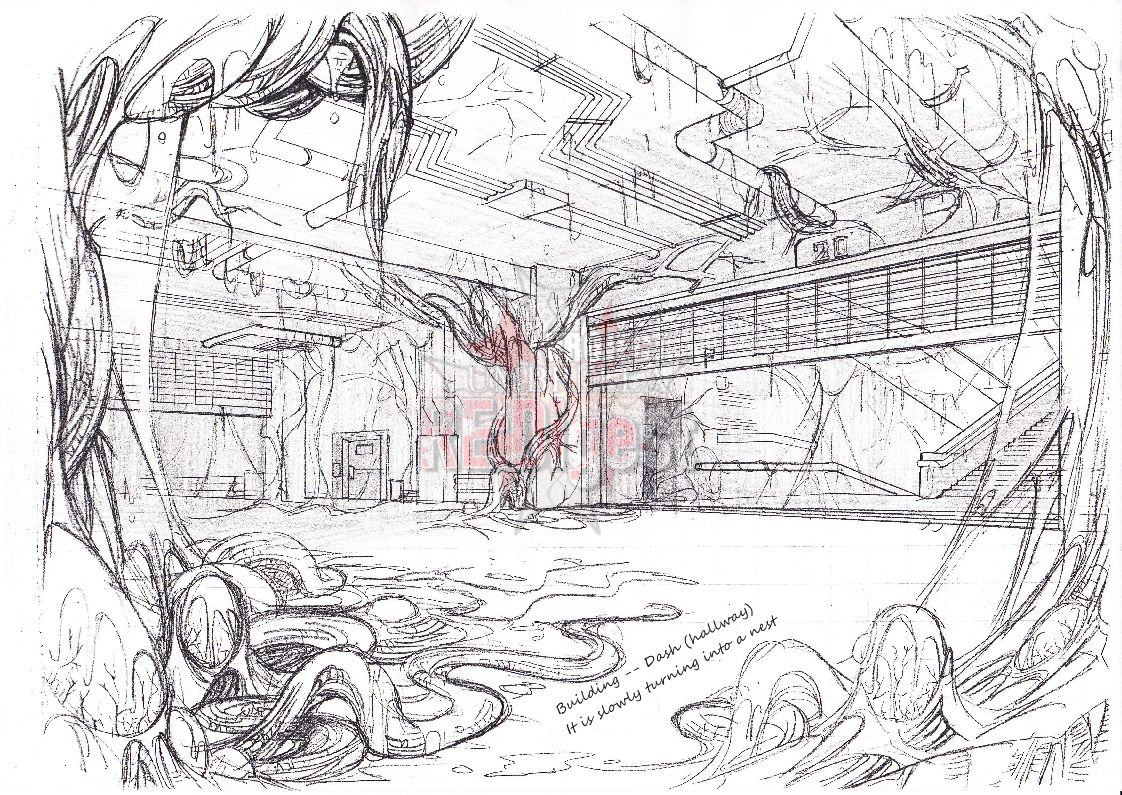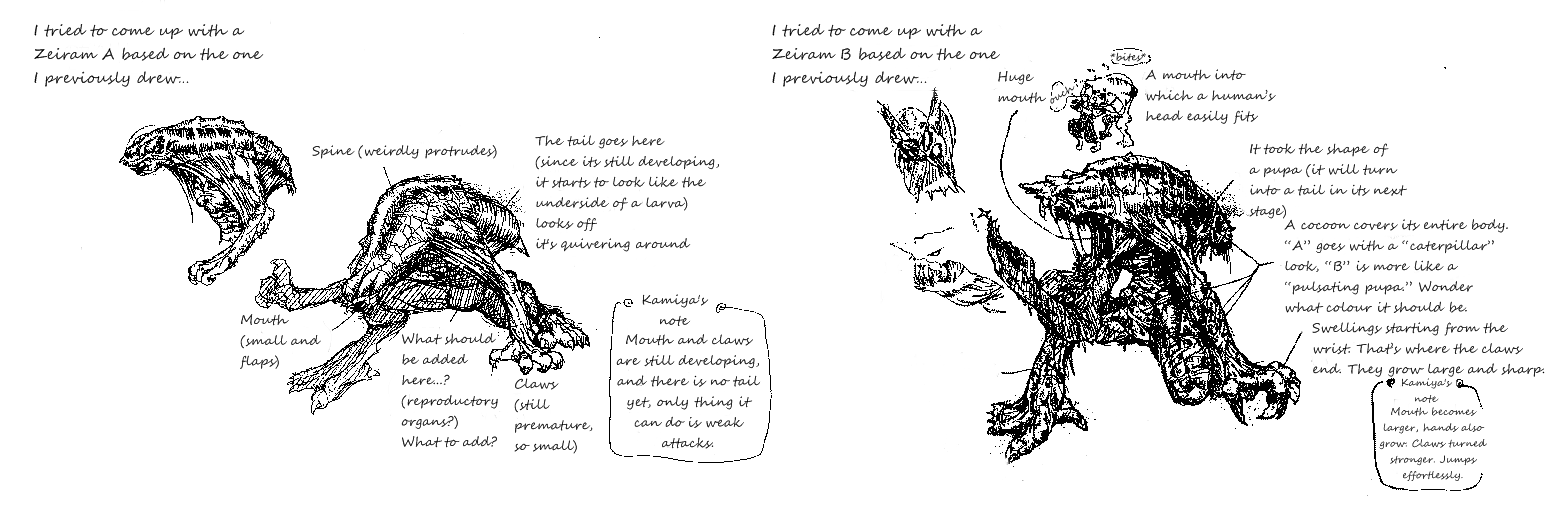Written by: MsSnugglebutt
Foreword
This article has been something I've been shaping up, nurturing, growing for the past 2 years. It started out as a bundle of short little translations, summaries and interesting facts, but over time, it was decided that some of the documentation deserves full translations, and then we realised this needs to be put together in a cohesive and comprehensive manner. The fandom deserves it, and some of the information's release has been long overdue. It's been very exciting for me to put this together, but also a huge relief to have finally finished it. Nonetheless, I hope everyone will find something in this they like.
But before I begin, I'd like to thank a few people for their support:
But before I begin, I'd like to thank a few people for their support:
George Trevor and the Crimson-Head Elder site, for allowing the full release on both their and this site, and for his patience on the release of this work.
All the Project Umbrella RE:Digest team, for their support and feedback throughout the full process.
Table of contents:
The Beginnings
1. "3D Horror" in first person
The Story
2. An early draft and storyboards
Beam and the Gang
3. Character concepts
The Cutting Room Floor
4. Cut gameplay and story ideas
Helicopter in the Sunrise
5. Trivia and epilogue
The Beginnings
1. "3D Horror" in first person
The Story
2. An early draft and storyboards
Beam and the Gang
3. Character concepts
The Cutting Room Floor
4. Cut gameplay and story ideas
Helicopter in the Sunrise
5. Trivia and epilogue
The Beginnings
1. "3D Horror" in first person
In November 1993, pre-production started on a video game at Capcom that would 2.5 years later release as Bio Hazard, spanning many sequels, spin-offs and all sorts of adaptations throughout the past 25 years. This article aims to give a comprehensive overview on the development history of the first game that started it all, especially focusing on the early development of the game systems, story and characters as well as cut content.
Even before the project was greenlit in 1993, there was an idea to create a game for the Super Nintendo as a pseudo-sequel to Sweet Home, but when the project seriously started its development cycle, the core goal was to create a fully polygonal horror game adapting the systems (game mechanics) of Sweet Home now in 3D utalising the technology of the upcoming Sony PlayStation hardware and capitalising on the new era of video games free from the 2D plane. The aim wasn't to adapt Sweet Home, rather to use its systems and the atmosphere those created as a leverage in creating a brand new IP, initially dubbed "3D horror" internally.
Conceptualisation for the actual game started in early 1994 with all sorts settings in mind:
For the location, different places were considered: a contemporary building, a hospital, a school, a graveyard, a castle, and in the end, a gothic-looking Western-style manor—what all of these had in common was the the feeling of being confined in an area with the need to escape.
For the threat, like in the previous case, many ideas were thrown around: something less transparent--more psychological than overt horror, like in Psycho, or evil spirits haunting the dilapidated mansion, or zombies, but not in the modern sense: more like ghouls, flexible enemies but ultimately just minions of a bigger threat. Some progress was made on the early version with ghosts, but in the end, the idea was discarded in favour of a biological threat—a freak accident in a research lab creating mutated, flesh-craving zombies alongside killer monsters.
Finally, the last piece of the puzzle: the heroes. Early ideas favoured civilians: survivors of a plane crash trapped on the mansion grounds. The cast was varied with at least 4 playable characters such as a young man, a woman, and even a psychic named Kanko. These characters were most prominent in the "ghost story" idea, but as the game shifted towards zombies and monsters, civilians were changed to a special operations unit sent to investigate the happenings in the research facility. While their approach was a lot more militaristic compared to the civilians of early ideas, one thing was always at the forefront: the key focus of this game will be escape, evading overwhelming enemies instead of taking them on gung-ho.
While the setting was being conceptualised, the ever-growing development team faced an arguably more important task: to create a game. Even though it was decided fairly early on that the game will largely adapt Sweet Home's game systems, a lot of unique features were also devised, many of which never made it into the final game, but were very much part of the core idea that made the game what it was at one point. Below, you will see excerpts from and analysis of a design document created while the game was fully 3D and played from the first-person perspective. A recurring bit in this document is that the game is compared to "other" or "regular" RPGs time and time again, seemingly trying to retain its RPG roots from Sweet Home.
Firstly, let's start with the basic ideas on what the developers had in mind for the game:
Even before the project was greenlit in 1993, there was an idea to create a game for the Super Nintendo as a pseudo-sequel to Sweet Home, but when the project seriously started its development cycle, the core goal was to create a fully polygonal horror game adapting the systems (game mechanics) of Sweet Home now in 3D utalising the technology of the upcoming Sony PlayStation hardware and capitalising on the new era of video games free from the 2D plane. The aim wasn't to adapt Sweet Home, rather to use its systems and the atmosphere those created as a leverage in creating a brand new IP, initially dubbed "3D horror" internally.
Conceptualisation for the actual game started in early 1994 with all sorts settings in mind:
For the location, different places were considered: a contemporary building, a hospital, a school, a graveyard, a castle, and in the end, a gothic-looking Western-style manor—what all of these had in common was the the feeling of being confined in an area with the need to escape.
For the threat, like in the previous case, many ideas were thrown around: something less transparent--more psychological than overt horror, like in Psycho, or evil spirits haunting the dilapidated mansion, or zombies, but not in the modern sense: more like ghouls, flexible enemies but ultimately just minions of a bigger threat. Some progress was made on the early version with ghosts, but in the end, the idea was discarded in favour of a biological threat—a freak accident in a research lab creating mutated, flesh-craving zombies alongside killer monsters.
Finally, the last piece of the puzzle: the heroes. Early ideas favoured civilians: survivors of a plane crash trapped on the mansion grounds. The cast was varied with at least 4 playable characters such as a young man, a woman, and even a psychic named Kanko. These characters were most prominent in the "ghost story" idea, but as the game shifted towards zombies and monsters, civilians were changed to a special operations unit sent to investigate the happenings in the research facility. While their approach was a lot more militaristic compared to the civilians of early ideas, one thing was always at the forefront: the key focus of this game will be escape, evading overwhelming enemies instead of taking them on gung-ho.
While the setting was being conceptualised, the ever-growing development team faced an arguably more important task: to create a game. Even though it was decided fairly early on that the game will largely adapt Sweet Home's game systems, a lot of unique features were also devised, many of which never made it into the final game, but were very much part of the core idea that made the game what it was at one point. Below, you will see excerpts from and analysis of a design document created while the game was fully 3D and played from the first-person perspective. A recurring bit in this document is that the game is compared to "other" or "regular" RPGs time and time again, seemingly trying to retain its RPG roots from Sweet Home.
Firstly, let's start with the basic ideas on what the developers had in mind for the game:
<Game summary>
The player chooses one out of 3 sub-characters, and together they form a two-person party. (Initially, there are only 2 characters to choose from; as the third character is a bonus, it can't be picked at first.)
This is a game where you enter a mansion (a laboratory) that is made up of 3 buildings in total, investigate why contact was lost with the place, and escape in one piece.
To achieve that, you have to work together with your partner and evade enemies while utalising the items you obtain along the way.
Game clear conditions
Escaping the mansion. To achieve that, you have to find the helicopter, which is the only way to escape, and use it. (Naturally, that isn't explained from the get-go.)
Game over conditions
The game is over when the main character dies. The game does not stop if a sub-character were to die, but in that case, it becomes harder to finish.
Examples:
1) If a special skill that a partner character possesses becomes unavailable, difficulty will increase when in combat or escaping traps.
2) Due to the obvious decrease of the total number of items the entire party can carry, there will also be times when the main character has to backtrack in order to progress on his own.
<How can the protagonist die?>
1) If you receive damage from enemy attacks, and your HP reaches zero, you die.
2) It may also happen that you die from receiving damage from traps or poison on top of enemies (there is also a chance of one-shot kills/immediate death).
<How is lost HP recovered?>
1) You can heal by "eating" food (healing power: low to high).
2) You can heal by "drinking" water (healing power: low).
*In case you get poisoned, you can halt its effect and neutralise it by taking medicine (a serum or antidote). If you ignore it, it will slowly decrease your HP in set intervals.
<Basic rules regarding the game system>
A partner once dead cannot be revived by any means. The dead body and the items carried by the partner will remain at the place of death.
If the party leaves Mansion 1, and heads to other areas, you can only add remaining partners to the party by walking back to the starting point.
In the game, time passes in real time unless paused. Even if you bring up the sub-screen/inventory, it has no effect on stopping time (if you pause the game, the main screen won't be visible).
<What are the most important take-aways upon completion? (what should be the most fun for the player)>
Figuring out how to solve the countless puzzles in the mansion.
How do I deal with enemies that are a lot stronger than I am?
1) Because this isn't a game where the player mows down enemies one after another, they simply will always be stronger than the party.
2) The goal is to survive and find the escape route while solving the mysteries hidden inside the mansion.
3) The two main characteristics for this game should be finding ways to: a) solve puzzles and b) deal with enemies.
This outlines how the game was going to operate and what its main goals were, which aren't all that different from the final product, but the aforementioned RPG elements are present. The documents make sure to implement keywords such as "HP" and "party" but also highlight that you and your party are very much vulnerable, there is no "revive" and death is permanent.
With the party system in mind, the next few entries will focus partner AI and the partner system in general:
In order to maintain cooperation, a sense of contact with one another, and any other kind of "human drama" that plays out between the "protagonist (the player)" and the "partner" under these circumstances, the player will not be left to their own devices in controlling their partners.
The fact that the player does not feel like a sort of puppeteer (is not in total control) turns into an essential factor in regards to partners. For that reason, partners will be allowed to operate on their own with AI that allows them to act based on their own judgement without direct control from the player.
However, it's necessary for them to serve a supporting role, acting in the background compared to the player at all times, so as to avoid "partners" perishing by taking actions on their own.
So to prevent them from getting out of hand, to a certain degree, there is room for giving partners simple orders.
(Example) Their HP is closing to 0; if there is a possibility of dying from the next attack of the enemy, even if it's just one hit:
The original order "protect your partner" changes to "protect yourself"
with that, the partner who received the [original] order will start taking a step back to hide behind the player. (Many types of actions will be laid out for partners electing to react this way.)
<What happens if a sub-character dies during gameplay (or after the beginning—immediately)?>
There are many possibilities for the sub-character to die immediately after the investigation starts. In such cases:
As long as the party has not stepped into Mansion 2 (or the courtyard outside of Mansion 1)
The player returns to the starting point, and still has the possibility to replace their partner.
If you do return to reorganise the party, everything will be reset with the exception of:
1) defeated boss-level enemies
2) completed sequences, and opened doors leading to secret rooms
and the investigation is allowed to continue onwards.
Conversely, in the case of partners dying following an entry to Mansion 2, the vehicle that brings you that area will be destroyed, and the road will be blocked, so that you are forced to continue to the very end with no change.
<On party members dying>
If a party member's life points become 0 due to taking damage from enemies or getting caught by traps, that character dies. In a death condition, momentarily game progression is stopped, and a scene is played, and the reason and manner of death is presented to the player.
If the dying character is the main character, then, in that case, it results in a game over, and while the game ends there, if it's a partner character that dies, then it carries on as it was.
There is no way to revive a partner once dead; however, their body and the items carried by them remain at the place of death (there is no way to move the dead body.)
There is a way to utilize the dead body as a "BOX" (a place to leave items in) instead, up to the character's inventory size.
<Ways to die>
Occasions where a party member dies can be separated into the following categories:
1) Dying by taking damage from monsters
This can be separated into two more ways: taking direct damage and dying from that, and passing shortly after being poisoned.
2) Dying by falling a victim to traps
Swallowed by a bottomless swamp or falling into a pit, and there are one-hit kills as well.
3) Turning into a monster
Not dying just yet, but becoming one of the monsters and not being able to fulfill the role of a party member anymore.
<Ways to die where a special "after-treatment" is required>
If a partner were to die by being trapped in a pit or turning into a monster, it would be difficult for its body to remain accessible no matter the way. If it comes to such a death involving an important item with a single copy being carried, then in that case a special "after-treatment" is required due to progression effectively ending up stuck.
⇒ After the death scene of your partner, in case of for example a pit, the items originally possessed by the partner character will be scattered around its vicinity.
Knowledge or bodily skill pertaining to the character involved, that cannot be replaced by just any item will be handled by leaving an item behind that substitutes it.
This entry revealed the workings of the intended party system that was ultimately cut from the game. As you could see, developers carefully examined the implications of having a partner and also the consequences of perma-death pertaining to inventory and such. This segment also let us in on an early progression idea for the story, one of the many story bits scattered around in this section.
With that, let's move on to other aspects of the game.
For example, on a fairly short note: at one point, the game was going to have a very basic HUD system.
For example, on a fairly short note: at one point, the game was going to have a very basic HUD system.
Item display window
In this window, one item can be "stored" that the main character can immediately use. If the player wants to change it, by pressing the "item select" button, items will be scrolled through in the order they were obtained in.
As can be seen by the image. It would've contained the image of the item selected. This is very similar to the minimalist HUD the series has had starting from Resident Evil 4.
With that out of the way, let's move on to the next bigger entry: combat.
With that out of the way, let's move on to the next bigger entry: combat.
<The place of combat in "3D Horror">
In this game, there is no strictly separated "combat mode" like what you would find in an RPG normally.
With no screen where time stops as you pick commands coming into contact with enemies, in order to progress in real time (the enemies don't stop either), the player has to come up with actions in the spur of the moment, and has to move and use ways against monsters actively so as to avoid being killed and letting everything going to waste.
On top of that, luckily overcoming enemies merits little more than "survival"—it will not yield items or experience. For that end, as far as the player is concerned, "combat" should be the ultimate evasive action and no more.
<The aim of combat>
As the biggest goal of combat situations
"suspenseful and palpitating atmosphere to a heart-stopping degree"
is what we target. And as our secondary targets
"undulating sense of tension"
"planting the impression of scary things"
"connecting to (leading up to) the dramatic"
"killing the player"*
are considered.
*although that might be an extreme statement, the main point is still the same as giving the player a taste of fear. (So as not to bring a sense of utter relief no matter how much the player might overcome.)
Conversely, by giving "combat" a feeling of exhilaration, we would completely get detached from the point of this game. Combat as an action in this setting needs to be only an emergency measure in order to escape from truly unavoidable situations when the player is driven into them.
Additionally, for that situation to become even more prominent the following are necessary:
1. Generally, the enemies need to be stronger than the party → The default is to run away from enemies
2. We won't construct absolute completion methods with defeating enemies → There exist different ways
3. Realisation and experience mean everything, it's the way of combat → Realisation = split-second judgement
This entry didn't necessarily include cut elements and it might be nothing new for a lot of players who enjoy the survival horror sub-genre, but I think these few pages gave an insight into the mind of the developers while coming up with these game systems, and perfectly sum up what makes confrontation in these games special.
The following few entries will discuss text and audio in the game.
<Message types>
If we want to generally classify the content of messages displayed, they can be separated into the following 3 categories:
1) Conversational text
The two categories are "conversation between partners" and "single comments from partners, call-outs"; however, there are no preset comments that can be added to the conversation by the player due to the fact that everything [their thoughts and comments] about the main character is embodied by the user themselves.
2) Explanatory text
Explanations are added concerning reactions to things such as the usage of acquired items or when some sort of interaction with the game world occurs. Since the approach is more about "show don't tell," these messages will also be complementary by nature too.
3) Cutscene
When it's impossible to explain it via any kind of image, or text is simply the more effective way to explain, or in the exposition of any other special situation, messages will be utalised.
Just like in the final game, these "messages" were always going to be audio and/or text-based.
<Message layout overview>
Due to the fact that messages are ultimately auxiliary elements, it's necessary for them to be displayed within 2 lines at most so that they wouldn't take up space within the main screen (so as not to obscure anything) whenever they are displayed.
In order to differentiate between conversation and narration, conversational text will be framed.
<Message display screen>
When dialogue is inserted, or when messages are displayed, they are automatically shown. Depending on the content, they can also be skipped by a button press.
Similarly to the previous entries, a lot of this information might not be new for those familiar with the series and their approach to story-telling, but it did contain some cut elements, and once again, it's nice to see the mental approach behind the decisions.
Finally, the last full entry regarding game systems before we move on to the next bit. Items:
Finally, the last full entry regarding game systems before we move on to the next bit. Items:
<Item screen display>
Whenever an item is displayed, observable realism is of very high importance, and the shape of that object needs to be presented fully polygonally as much as possible.
The very moment objects placed on-screen are spotted in general, it would be best if it was possible to judge whether they can or cannot be picked up, but I've been considering that something should appear regardless even if a player tries to do the "pick-up" action among items that cannot be picked up. In those cases, the situation will be dealt with by displayed messages like below.
(Since the number of items that can be carried by your party is limited, it wouldn't be possible to take every item in a room anyway.)
Example messages
Trying to pick up an item that cannot be picked up:
"I can't take that with me."
Doing the "pick-up" action even if there is nothing to pick up:
"There is nothing I could take with me."
Trying to take an item that needs some additional action to be taken anyway:
"I can't take it with me just like this."
Trying to take an item that would exceed the carry limit:
"I can't take any more items with me."
In cases when items cannot be polygonally rendered, objects with size restrictions will "glint" or will be displayed with some similar symbolic representation, and will call the player's attention to them.
For example: like ammo on the ground or an earring, or some similar small object.
<Noticing an item→Picking up an item>
When an item is picked up, the player will get close to the item up until a set distance, then the item will be automatically picked up. (If your inventory is full, you are able to replace an item you hold with it.)
There could be cases where you have to carry out actions such as "crouch down" or "move around objects" to successfully obtain an item at points.
Once the player successfully obtains an item, a little cutscene plays where the character grabs the item from an external view. Then, it cuts to the main screen, and it brings up the item to the centre of the screen in a close-up, and then it displays the message pertaining to whether you pick the item up or not.
<How to leave items behind>
⇒ Generally, you can't drop items anywhere and at any time. There are "BOXes" (tentative) placed inside the mansion, and you can use them for storage leaving up to 3-5 items (it varies by box) in them. You can't carry the boxes themselves with you though.
*In save rooms, you can basically do the same thing without boxes.
As can be seen, the main idea was very similar to what was implemented in the final game. An interesting thing to note: picking up items by getting close to them was a game system that could be seen in Alone in the Dark (an influence that will be later touched upon in section 2).
On top of these systems and ideas listed, there were many other that were brought up already very early on in development such as the idea of no checkpoints instead having a save system where the player uses limited (yet undecided) items for saving the game in 1-2 designated "save rooms" (the first save in every such room was going to be a freebie) in each main area.
The inventory screen was mocked up from the get go as well, as it was partially touched upon in the entries related to "items," with character portraits, names, status, item list, and an options button as well, but originally it wasn't going to pause the game (not stopping combat either), but the player also couldn't navigate or take action outside the active status/sub-screen. Interesting things to note is that other status conditions beyond poison were considered: such as infection and bleeding. Health was also going to be given in a numerical value as well.
On top of these systems and ideas listed, there were many other that were brought up already very early on in development such as the idea of no checkpoints instead having a save system where the player uses limited (yet undecided) items for saving the game in 1-2 designated "save rooms" (the first save in every such room was going to be a freebie) in each main area.
The inventory screen was mocked up from the get go as well, as it was partially touched upon in the entries related to "items," with character portraits, names, status, item list, and an options button as well, but originally it wasn't going to pause the game (not stopping combat either), but the player also couldn't navigate or take action outside the active status/sub-screen. Interesting things to note is that other status conditions beyond poison were considered: such as infection and bleeding. Health was also going to be given in a numerical value as well.
Examination texts for gaining additional information about the world was also something developers settled on early on. One difference was the fact that your partner would also comment on the environment.
As discussed in the previous translation, items worked pretty much the same way: glinting for smaller items to stand out, and the player being able to examine them close-up in full 3D once picked up, but then your partners also commented on them, and helped find items hidden within items for example.
As discussed in the previous translation, items worked pretty much the same way: glinting for smaller items to stand out, and the player being able to examine them close-up in full 3D once picked up, but then your partners also commented on them, and helped find items hidden within items for example.
So far, everything discussed was related to the original, fully-3D-first-person-view version of the game, but as we know, when the game's marketing started, the game was shown from an external perspective and with pre-rendered backgrounds. In the following parts of this section, with the use of development documentation, I'm going to describe why the developers decided to change over to the fixed camera from the first-person perspective, and also the changes themselves that brought for the game, as well as related concepts that weren't utalised fully or at all.
Generally, the problem was the team's lack of experience with new hardware and lack of staff with specialised experience in 3D game design, so going fully 3D on such an expansive game world they came up with was ultimately deemed way too time consuming. One thing they came up with the alleviate that pressure was to put 2D sprites of enemies in the game over fully 3D environments, but that was quickly dropped, and they moved on to another idea:
Generally, the problem was the team's lack of experience with new hardware and lack of staff with specialised experience in 3D game design, so going fully 3D on such an expansive game world they came up with was ultimately deemed way too time consuming. One thing they came up with the alleviate that pressure was to put 2D sprites of enemies in the game over fully 3D environments, but that was quickly dropped, and they moved on to another idea:
<On changes to the system>
By going with flat (2D) images instead of fully polygonal 3D backgrounds, the previous design plans will be amended as follows:
1) On the screen layout
The previous design mostly involved a 3D representation that gave the impression of looking around from the protagonist's point of view, and that was accentuated with the inclusion of an external view for cutscenes, but after this alteration, it will be the other way around: with the external view becoming the primary one, and with the first person view being used similarly to a cutscene, the direction is enhanced (like when picking up items, or when discovering a secret path and so on).
However, alongside a primary external view, the polygons freed up from the backgrounds will be displayed on the screen as seen below, with no degradation in quantity or quality, due to being able to divide them between the rendering of the party and enemies .
"You" + "Partner"
"Enemies" x 2
Each will have 800 polygons.
↓
(Old design: 700 polygons x 3 characters)
Even when you chose a "look for things" type of command, up until now, the partner character only helped looking in the player's imagination, but now they have to actually move around as though helping the protagonist search as the external view will become the primary one.
What this meant in practice is that the omission of fully 3D environments and the primary first person view came with a net increase of 1100 polygons that could be divided between the exemplary 4 characters on screen instead of the fps view + 3 characters.
This also meant a change in the representation of partner characters:
This also meant a change in the representation of partner characters:
2) Movement of partners
With the change of the main view from first person to external, the number of scenes where the user directly observes the movements of the partner characters in front of their eyes will be overwhelmingly increased.
The developers definitely saw this as an improvement and it meant they no longer had to worry about optimising environments for the hardware since the use of pre-rendered images freed up tons of resources.
Now, let's see the actual description of how the fixed-camera system was envisioned to work:
Now, let's see the actual description of how the fixed-camera system was envisioned to work:
<On the screen layout>
The game basically progresses with external, primary, points of view seen from all sorts of angles, but, like in the situations below, there are cases where the screen cuts to a first person point of view:
a) When opening or closing a door
b) When picking up an item
c) When dying (cutscene)
For example a scene for the moment when the character is toppled [by an enemy].
When first person POVs occur, similar to the ones mentioned above, the player has no control. A sort of half-cutscene treatment applies.
<On the effect of the inclusion of first person POVs>
During external POVs, they are utalised for reasons that demand for effects like the following:
1) To show that there is an impactful moment that serves as a direction [for the story]
2) To add variation (a change in appearance) to a scene
3) To display the death scene of the protagonist or a partner in an even more gruesome way
4) To control the degree of tension.
<On the movement>
With the utalisation of close-ups upon sub-characters through the external view, the various reactions they have will attract the attention of the user, maintain emotions, and intensify the representation of cooperation.
Example 1
You are attacked by a zombie, you drop your gun on the ground. You are cornered and in a pinch. → Your partner picks up the dropped gun, and defeats the enemy at the last second.
Example 2
Your partner makes a gesture that looks like they noticed something, so you approach it thinking about what it may be. Upon that, you realise there is an object there that looks like a lever. → As you pull the lever together, it turns out to be a switch that disables a trap.
Example 3
Something pulls your partner off-screen. In the next moment, you hear the scream of your partner. Hastily, you try to head towards the direction of the screen where your partner disappeared to, and there, you see in front of you your partner still being attacked.
These entries focused a lot on how the core systems would've been affected by the switch to fixed camera. A lot of these are no longer relevant since the partner system didn't make the cut ultimately. The first-person view scenes are no longer fully present either. Some interactions, such as looking at tables retained it, but not in the sense they were intended, probably due to the fact that it would've required a lot of unique angles for the backgrounds.
Finally, let's see how the combat was after the change:
Finally, let's see how the combat was after the change:
<Combat>
Square button → attack
X button → switch item
Below, you can see a combat scene; it does not break the flow of the game, so it gives an example of this "seamless" combat style (think of the feeling of seeing an enemy close by and shooting your gun):
1. The screen is shown from an external view. It's pretty much the same as during movement, command selection and no message of any sort are displayed (except for dialogue).
2. The weapon (item) inside the small window displayed in the corner of the screen can be used by pressing the "attack" button. Naturally, there are items that are limited in number of uses or cannot be used by the character.
*A switch between items displayed within the windows is possible to be carried at any given time by the press of a button.
3. Attacks are carried out automatically upon pressing a button. In case of guns, sights or the line of fire isn't visible, so you must shoot by lining up your character's body with the enemy well.
*Even if they fire while taking aim, depending on the team member, their attack might hit or miss.
*Imperative → only the main character can operate an action with 100% performance. As for other members, nothing else may be indicated but the rate at which they are switching between weapons and items.
4. It's up to the player's judgement whether to defeat an enemy even in 2-3 attempts by running away in the middle of combat. The end of the combat is brought on by the player.
*Conversely, there could be situations where the enemies don't let you escape.
As can be seen, the core ideas have already been in place, and once again, they are highlighting that this isn't like your ordinary (J)RPG: there are no combat messages, it all takes place real time, no "END" or "ESCAPE" command: it's a seamless flow between exploration and combat.
With this, the examination of early game system designs comes to an end. I think they were very insightful in taking a glimpse at what the developers were considering in trying to realise their ideas and concepts.
In the next few entries, I'll examine what little lore information we have for this very early version of the game.
First, starting out with the area where the game would have taken place:
With this, the examination of early game system designs comes to an end. I think they were very insightful in taking a glimpse at what the developers were considering in trying to realise their ideas and concepts.
In the next few entries, I'll examine what little lore information we have for this very early version of the game.
First, starting out with the area where the game would have taken place:
As you can see, more than 3/5 of the envisioned environments never made the cut, and little is known about these cut areas, but the story was originally going to have four main "mansions:"
Mansion 1 is the iconic mansion.
Mansion 2 is the dormitory, which is located at the bottom of the courtyard.
These two remained in the final game, and the other two were:
Mansion 3 was the tower, which was supposed to be located near a fountain, and lead to the underground facility
Mansion 4 was supposed to be located in the center of the courtyard, near a graveyard and boathouse, and this also led to the heliport through an underground passage.
You might also notice that while the graveyard and none of the shacks made it into the game, they were reintroduced for Lisa's area in the 2002 remake of the game.
For a more detailed examination of these areas, see section 4 for cut content.
Mansion 1 is the iconic mansion.
Mansion 2 is the dormitory, which is located at the bottom of the courtyard.
These two remained in the final game, and the other two were:
Mansion 3 was the tower, which was supposed to be located near a fountain, and lead to the underground facility
Mansion 4 was supposed to be located in the center of the courtyard, near a graveyard and boathouse, and this also led to the heliport through an underground passage.
You might also notice that while the graveyard and none of the shacks made it into the game, they were reintroduced for Lisa's area in the 2002 remake of the game.
For a more detailed examination of these areas, see section 4 for cut content.
Alongside the location, the basic characteristics of the main party were also drafted:
<Breakdown of partners>
Within the 3 kinds of partners in total, we are going with 2 men and 1 woman.
Man 1
In direct combat, he is the most reliable among the three of them, and he is the most likely to deal with monsters on equal terms one way or another. However, he can't find a way into locked rooms and such, so the extent of the area that can be visited on the map will be greatly restricted.
Woman 1
When it comes to direct combat, she will be downed by monsters with ease, but she is able to deal with locks to gain access to areas Man 1 can't, and she is also able to disarm traps, and regarding the movement, the restrictions of Man 1 will be obviated.
Man 2
Upon completing the game with both Man 1 and Woman 1 as partners, he will become available to be added to the party at the beginning. In contrast to the other two, he is a bonus/joke character, and behaves completely out of place lacking any practical skills.
If I had to say, he becomes more of a burden to the player than anything, but it changes the feel of the game to the degree as if the player was playing something else entirely, and its role will be shifting the atmosphere of the game.
On the main character's name
The main character can be named as the player likes, but once the game has started, it cannot be changed.
Similarly to the map above, the characters also have their own dedicated entry in the cut ideas section, so I'm not going to go too deep into them here, but if you are familiar with this image, I think these descriptions will make a lot of sense:
Lastly, at this stage of development, the story was very basic, but the core ideas had already been present to a degree:
<Story summary>
In the mountainous area of an undetermined country, there was a facility where research and development of cutting-edge bio-technology was rumoured to be carried out. However, due to the thick forest and the increased security, no ordinary person ever got too close to it.
Publicly, the laboratory was producing drugs related to medical treatment and such, and while there was word that they were conducting experiments – that they repurposed a crumbling and outdated mansion – there is no doubt about it that those who took one look at the eerie-looking lab from the outside, by no means felt inclined to truly believe that facade.
Among the people who actually had access to the place, stumbling upon something they shouldn't have seen was often ignored as strange occurrences of things disappearing without a sign when checking again have gone down so many times.
After one day however, contact was completely lost with the mansion.
As one would expect, for the search-and-rescue effort of an important facility with such top-secret dealings, a first-class unit that's suitable for that had to be dispatched; however, the orders of a rescue mission of sorts were given to a soldier (the protagonist) who has never really been good at following orders.
There are just two people for his back-up in this strange incident, and also a completely unrelated bonus character.
But ahead of their departure, the team received additional orders that were hard to make sense of and one generally couldn't imagine them to be given to a rescue team:
"Under no circumstances you are to touch any materials or equipment in the mansion, and it's also not permitted to document any of those."
"No signs of struggle are identified. Therefore carrying guns, knives, or weapons of any sort is forbidden."
"There is no need for any kind of contact in the meantime. Reports will be received upon return." (wireless radios will be taken away)
With that, having been stripped of all equipment, the helicopter carrying our heroes took flight heading to the mansion in a great hurry.
This ends the first part of this article. I hope these game design elements were interesting, and helped conceptualise the idea of what sort of game Capcom wanted Bio Hazard to become.
Now, on to the story.
Now, on to the story.
The Story
2. An early draft and storyboard
While actual game development was underway, Capcom knew that modern games required more complex stories, and to really capitalise on the new and expanded avenues the PS1 offered, the game needed a proper story and scenario with a mature progression. The story outlined above wasn't good enough, it was as simple as Megaman's story: the characters went in, rescued some researchers and left.
This game however, much like the horror films that inspired it, needed a mythology – lore – around it, and a meticulously designed cinematic approach, so in the second half of 1994 scenario writing started with a full-on script and storyboards. The story, much like the game itself, was inspired by many titles that came before it: Alone in the Dark, Alcazar: The Forgotten Fortress, Nightshade, and the fighting fantasy book: House of Hell.
Below, you can read the full translation of one the earliest full story progressions written for Bio Hazard. While the events and participants may seem familiar, don't be surprised by unknown names, in section 3, the history of the characters will be examined. Enjoy!
This game however, much like the horror films that inspired it, needed a mythology – lore – around it, and a meticulously designed cinematic approach, so in the second half of 1994 scenario writing started with a full-on script and storyboards. The story, much like the game itself, was inspired by many titles that came before it: Alone in the Dark, Alcazar: The Forgotten Fortress, Nightshade, and the fighting fantasy book: House of Hell.
Below, you can read the full translation of one the earliest full story progressions written for Bio Hazard. While the events and participants may seem familiar, don't be surprised by unknown names, in section 3, the history of the characters will be examined. Enjoy!
Biohazard Story Plot Plan A
On the ?th of ?, 199X
In the rural town of Harnbee, New Jersey, an unknown, mysterious disease broke out, it spread with tremendous strength while leaving countless deceased behind—this is how the incident was reported; however, the day after that, a corrective article was formulated that deemed it "misleading reporting," and so the details of the incident turned hazy.
[item: "newspaper"]
A few years later, a father, who was supposed to be dead, was spotted, and other strange cases of eye-witness accounts followed, and were reported by the media in Harnbee.
In the same time period, death cases with inexplicable causes kept popping up. At a glance, it appeared that the bodies of the victims were partially devoured as if attacked by wild animals, but the results of the bite-mark analyses concluded them to be of human origin.
A SWAT team receives the order to head on-site. It has 10 members serving under Captain Hustler, including the protagonist: Marcurio.
En route to the area of occurrences, the helicopter carrying Marcurio and the rest of the team breaks down, and they land on the outskirts of the town.
Just as they land, the team is attacked by a group of bizzare-looking people.
Against overwhelming numbers, the SWAT team is ordered by the hard-pressed Captain Hustler to spread out and escape. Marcurio runs away with his partner Jill.
Marcurio and the others take shelter in a nearby residence. They have nearly run out all of their ammo already.
On the outside of the residence, the aforementioned mob is swarming up. With no other option, they decide to wait for rescue inside.
They loudly call for the residents, but no one answers; however, it's kept in good shape, and the house doesn't appear to be empty at all.
In the dining room, they obtain Captain Hustler's handgun who they got separated from while escaping earlier. It seems he ended up taking refuge in the mansion as well.
In a hallway, they find a man who is crouching and whose head is repeatedly moving. When they call out to him, he turns around to face them.
Half of the face of that man had rotted away. Moreover, the dead body of Carlisle, their team mate is there, torn into pieces with his limbs bitten off.
Marcurio and the rest somehow get away. If they don't help him out really quickly, Captain Hustler will be in huge danger.
Eventually, Marcurio and the others soon learn from the diary of one of the servants in the mansion that the aforementioned infectious disease had spread from there. But is there some sort of connection between the disease and those dead-looking people?
In a hallway, they spot a message left by Captain Hustler on a wall. It seems the situation is fairly dire.
They hear a gunshot!
a) Go and immediately investigate
b) Go somewhere else
↓
a) They find one of their teammates, Yuno, surrounded by enemies.
↓
a1) Help her
a2) Ignore her
↓
a1) Yuno is severely injured, and is already
near death.
↓
a1) Yuno passes away telling them that there is a laboratory underneath Building 3, and the core of this incident appears to have spread from there.
↓
a1) They leave behind Yuno's body and Marcurio departs with the others to look for Captain Hustler.
a2);b) Eventually, Marcurio discovers the massacred body of Yuno with the others.
On the way, they learn from a map they discovered that there is a heliport facility in this residence and that there seems to be a helicopter there that can fly. There's still a chance left to escape!
c) Head to the heliport
d) Don't head to the heliport
↓
c) Surrounding the heliport facility, there is a high-voltage current, and they can't get close to it. It would seem that the electric power system is in Building 3.
↓
c); d) Inside of Building 3 a ferocious monster is left prowling, and it proves to be a difficult enemy.
You get to turn off the switch for the electric current, once you are about to return to the heliport.
e) You have helped Yuno
f) You have not helped Yuno
↓
e) They discover the entrance to the
underground area of Building 3.
↓
e1) Head underground
e2) Ignore it
↓
e2); f) They return to the heliport, and escape the mansion with the helicopter, but on the back seat a mysterious silhouette appears... (horror trope)
↓
e1) Underneath Building 3, a chemical plant was established, and they discover parasite used for a pathogen, and deformed creatures created from the parasites. This place is too dangerous! If they don't destroy it...
e2) Credits
↓
e1) On the lowest level, they find Captain Hustler in a gorgeous room; however, something feels off. "Ladies and Gentleman! I bow my head to you... You have passed the test."
e2) THE END
↓
e1) A top secret project promoted by the army... To overcome the weakness of the mind such as fear and sympathy, the weakness of the body such as pain and fatigue, an immortal soldier that is the Zombie was created through a parasitic life form. (The strange incident from years ago was due to the leakage of this parasite.)
And it was Marcurio and the others who were chosen in order to obtain combat data against these parasites.
For the final test, Captain Hustler releases the newest biological weapon "Dio"—fitting for these capable people. This creature is the ultimate weapon that also possesses intelligence on top of an invincible body.
However, Dio turns against orders, and suddenly lunges at Captain Hustler who was standing behind him.
Taking that chance, Marcurio and the others escape the room.
Marcurio and the rest decide to destroy the facility by learning from a lab journal in a room they happened upon that there's a self-destruct system for getting rid of evidence.
After setting the self-destruct system, Dio blocks Marcurio and the others' way who try to escape from Building 3. Not only did Dio grow twice its size from before, but he also grew another arm. On its back, he even starts growing wings. It seems he is able to evolve matching the circumstances/environment.
Dio talks. He appears to formulate broken sentences!
Fight against Dio: details are the same
Escape with the helicopter
The mansion explodes
Ending
Credits
END
While this initial story does not go very deep into the details, the major beats had already been there. Iconic scenes such as the turn-around-zombie, choices that affect the outcome, a bad ending, Captain Wesker – I mean Hustler – working for the "bad guys," and so on. One interesting idea here is that the biological agent involved is not a virus but a parasite, something the series ultimately touched upon in later entries. On top of this, Dio is the early concept for the Tyrant—more details about him in section 4.
With the writing process being refined more and more, below you can read the script and storyboards for the first few scenes of the game revealing more of the early characters and background story, and ultimately showing the deliberate decisions the released game also went with.
With the writing process being refined more and more, below you can read the script and storyboards for the first few scenes of the game revealing more of the early characters and background story, and ultimately showing the deliberate decisions the released game also went with.
note regarding script #2: it does say "Ed is sitting on the right of Jill" in actuality, which is incorrect: he is sitting on her left, the camera moves to the righ
With that concludes this section. It's definitely interesting to see these early drafts and I wish we had more pages where we could further examine old characters and their fates. Speaking of characters, the next section will provide an overview of the characters and their progression.
Beam and the Gang
3. Character concept
In earlier sections, multiple different iterations of characters were mentioned. Here, I'm going to clarify the evolution of the story's main characters and the progress of their roles over time.
While very early on in development, civilians were also considered as main characters for the story, I'll not include those in this chart because they weren't defined adequately and they cannot be connected to the special forces characters the game ended up with.
Below, you can find a handy chart that describes the changes involving each character split into five stages from the very beginning until the retail version:
While very early on in development, civilians were also considered as main characters for the story, I'll not include those in this chart because they weren't defined adequately and they cannot be connected to the special forces characters the game ended up with.
Below, you can find a handy chart that describes the changes involving each character split into five stages from the very beginning until the retail version:
Note: "omake" means it was a non-canonical bonus character
In the first stage starting in early 1994, we can see very basic concepts for the characters that existed for the game before any proper story was written. One important thing to note is that even by that time, the preliminary designs of Chris and Jill were already similar to what we got in the end, but ultimately these designs were mostly utilitarian—defined by their usefulness in the game and to the party system described in the first section of this article.
In the second stage by mid-to-late 1994, a lot familiar concepts crop up as the game had received a proper plot and the characters' roles were starting to take shape beyond their function as game characters and they also started existing as story characters, but maybe for just that reason, the two male partner characters weren't defined further as of yet.
Dropping the idea of naming the character, Marcurio was given his odd name, and a detailed backstory.
Dropping the idea of naming the character, Marcurio was given his odd name, and a detailed backstory.
Woman 1 became Jill Morrison, and similarly to Marcurio, she had been fleshed out.
The antagonist inside the team was also given a last name: Hustler.
Other notable characters were Carlisle and Yuno, whose established roles made it to the final game even in a sense.
The third stage in late 1994 is where one starts to notice that these characters are not much different from their final counterparts as their roles both thematically and game design-wise became fixed. At this point, the team was known as the "Raccoon SWAT Bravo Team," and they'd already had their initial logo, which was a scorpion.

This can still be found in some builds of the game among the textures as well in Jill's beret for example.
At this point, they all had proper seatings in the helicopter set up as well:
Another spelling for Beam's name popped up, but other than that not a lot has changed about him.
Jill received her final last name but beyond that, she'd remained fairly unchanged.
The partner characters beyond her however were defined further: with Gelzer having a heavier impact on the story, as he was going to betray the team on Wesker's orders.
Jill received her final last name but beyond that, she'd remained fairly unchanged.
The partner characters beyond her however were defined further: with Gelzer having a heavier impact on the story, as he was going to betray the team on Wesker's orders.
Ed was fleshed out as a jokester, the idea of him being an useless character to alleviate the mood was discarded, and he became a fully-fledged part of the story.
The characters' roles were also quite mixed up still: Beam was the pilot of the team and Yuno was his co-pilot, but she later passes in the mansion still.
There were also two casualties in the intro: Joseph and a woman named Gwen who never really appears or gets substituted by anyone in later versions of the game.
A character named Richard also existed but his role wasn't really elaborated on in the scripts we have access to.
There were also two casualties in the intro: Joseph and a woman named Gwen who never really appears or gets substituted by anyone in later versions of the game.
A character named Richard also existed but his role wasn't really elaborated on in the scripts we have access to.
By stage four in early 1995, the character list had already reached its almost final form: Jill got elevated to main character status, and this is the point where the party system also dissolves. The characters themselves were moved around to their near-final roles and names.
Yuno turned into Mathilda, and while she was no longer Beam's co-pilot, she was his dedicated story partner now, and some aspects of Gelzer, such as his size and role as a traitor got turned into Barry Burton, him becoming Jill's dedicated partner.
Ed and Gelzer also morphed into the redesigned Edward who became a supporting character with a burly physique now, and being Ed only in name, no artwork is available of him, although initially, Joseph was going to find his entire body, not just his hand in the intro, and his earliest bio in guidebooks describe him to be quite tall and heavy (193 cm/112 kg)-
Gwen as mentioned above disappeared from the story, now it was Joseph who died the same way she did, absorbing her role in the story.
Carlisle got turned into Kenneth who also received Ed's ethnicity who in turn received his.
Yuno's thematic role as someone dying in the mansion you can optionally help became Richard's.
Brad also became a character and absorbed Beam's role as the pilot.
The team was also split into two groups: Alpha and Bravo Team.
Yuno turned into Mathilda, and while she was no longer Beam's co-pilot, she was his dedicated story partner now, and some aspects of Gelzer, such as his size and role as a traitor got turned into Barry Burton, him becoming Jill's dedicated partner.
Ed and Gelzer also morphed into the redesigned Edward who became a supporting character with a burly physique now, and being Ed only in name, no artwork is available of him, although initially, Joseph was going to find his entire body, not just his hand in the intro, and his earliest bio in guidebooks describe him to be quite tall and heavy (193 cm/112 kg)-
Gwen as mentioned above disappeared from the story, now it was Joseph who died the same way she did, absorbing her role in the story.
Carlisle got turned into Kenneth who also received Ed's ethnicity who in turn received his.
Yuno's thematic role as someone dying in the mansion you can optionally help became Richard's.
Brad also became a character and absorbed Beam's role as the pilot.
The team was also split into two groups: Alpha and Bravo Team.
The Cutting Room Floor
4. Cut gameplay and story idea
While in previous sections, I touched upon cut ideas briefly, this chapter's sole focus is concepts and bits that didn't make it into the final game from gameplay and story perspective. I'm mainly going to focus on ideas that didn't come up in previous sections of the article. I'm going to divide this section to 7 smaller segments based on theme:
1) General features
A lot of the game's cut features were thoroughly examined in the first section of the article. Here, I'm going to list the ones that are a bit more vague and/or weren't included in the document translations:
Starting from the very beginning that is the main menu, the first thing of note is that the ID cards the characters had were going to have customisable ID numbers instead of preset ones. This would've been done via a keypad where you could've entered your own personal ID which would've been recorded alongside your save data. Below you can see a pixel-perfect recreation from existing assets in preview builds based on design documents.
Starting from the very beginning that is the main menu, the first thing of note is that the ID cards the characters had were going to have customisable ID numbers instead of preset ones. This would've been done via a keypad where you could've entered your own personal ID which would've been recorded alongside your save data. Below you can see a pixel-perfect recreation from existing assets in preview builds based on design documents.
One cut feature was zombies being able to break down or open doors and enter rooms, and to counter that, there would've been options to barricade the entrances to those areas. The "break-in" feature was restored in the 2002 remake of the game.
There was also the option to exchange an item from your inventory with the one you were about to pick up if it was full, something that later appeared in Outbreak.
There was also the option to exchange an item from your inventory with the one you were about to pick up if it was full, something that later appeared in Outbreak.
2) Weapons
The next theme is cut weapons developers wanted to implement.
Wesker at one point was going to carry smoke grenades.
M18A1 claymore mines, which could've been placed on the ground and could be found in the armoury underneath the dormitory, but ultimately, the developers couldn't find the time to implement it.
Originally, in the same armoury both Chris and Jill could've found a flamethrower to use against Plant 42; however, it was going to be too heavy for Jill to use, so Barry picks it up (the scene with Barry and the flamethrower is still present in the final game).
Dum-Dum Rounds could be found in the game data, and one location they would've been found in the game is the secret room in the library that opens up once the spotlight puzzle is solved.
Wesker at one point was going to carry smoke grenades.
M18A1 claymore mines, which could've been placed on the ground and could be found in the armoury underneath the dormitory, but ultimately, the developers couldn't find the time to implement it.
Originally, in the same armoury both Chris and Jill could've found a flamethrower to use against Plant 42; however, it was going to be too heavy for Jill to use, so Barry picks it up (the scene with Barry and the flamethrower is still present in the final game).
Dum-Dum Rounds could be found in the game data, and one location they would've been found in the game is the secret room in the library that opens up once the spotlight puzzle is solved.
There were plans to include an Artillery Luger among the guns of the game.
On top of this, "passive" weapons that could've been used in a defensive manner were also considered (they were later implemented in the previously mentioned remake).
The Grenade Launcher also had an alternate design at one point with a foregrip, like its remake version.
On top of this, "passive" weapons that could've been used in a defensive manner were also considered (they were later implemented in the previously mentioned remake).
The Grenade Launcher also had an alternate design at one point with a foregrip, like its remake version.
Originally, the rocket launcher was going to be an 81mm SMAW.
3) Files
While files are one of the last things that are usually properly written for a Resident Evil game, there are still some that didn't make the cut. They can be found in the Japanese demo version of the game.
These files were all going to contain clues for various puzzles found in the game as well as add background lore to the mansion, but they were ultimately removed.
These files were all going to contain clues for various puzzles found in the game as well as add background lore to the mansion, but they were ultimately removed.
Written Invitation
Thank You Letter
Trevor's Notes 1-9
Thank You Letter
Trevor's Notes 1-9
These files have been translated before and can be found on our site here. Including a more detailed backstory for them.
4) Puzzles and items
Torches lit is a flag that's mentioned passingly in a file, without any additional detail.
The V-Jolt in early files is called the "Kangaroo Jolt", which is a boxing reference probably due to its devastating effect.
The oil painting puzzle
In the area where you find Kenneth's body in the final game (the body itself was going to be in another room in the right wing of the building), there was actually going to be a puzzle there instead, you can find parts of its details below:
There is an oil painting hung up in the lounge.
Normally, it looks like the picture below.
The V-Jolt in early files is called the "Kangaroo Jolt", which is a boxing reference probably due to its devastating effect.
The oil painting puzzle
In the area where you find Kenneth's body in the final game (the body itself was going to be in another room in the right wing of the building), there was actually going to be a puzzle there instead, you can find parts of its details below:
There is an oil painting hung up in the lounge.
Normally, it looks like the picture below.
But, after exiting to the hallway and pressing a switch (once you press the switch, the light in the lounge turns off; push it again, it comes back on),
if you return to the coffee room...
On the condition that the light is turned off, the Orion will become visible over the dark background in the oil painting.
On the condition that the light is turned off, the Orion will become visible over the dark background in the oil painting.
"BREAD" puzzle
Not a lot is known about this puzzle other than the fact that next to Forest's body, it was going to be written on the floor in his blood. In Chris's scenario, and if Jill entered the area without Barry present, it was just going to read "...READ".
Similarly to the vandalised Researcher's Will file, it is assumed, that Barry erased part of the clue.
Similarly to the vandalised Researcher's Will file, it is assumed, that Barry erased part of the clue.
The pickaxe
One cut item was the pickaxe, which was going to be used to break the floor, initially, in back area of the main hall to retrieve an unknown item, then its use was moved to the recital room where it would've been used to progress and go underground to reach the grave of George Trevor. The clue for it would've been the fact that the floor makes a distinct sound when walked on and examined.
Double security keys
A set of two identical keys were going to be the key item for opening the lock-up area instead of the collectible MO discs, and it needed two surviving characters to operate. The item could be found in the files, and there was also accompanying audio recorded for the scene for Chris's story:
5) Areas
Mansion
Based on numerous concept artworks we have of the mansion, you can see below concept art for almost all of the rooms in the mansion.
There are also a few designs for the mansion that didn't make that cut. As can be seen below:
Alternative Main Hall Designs
The main hall was one of the first areas the team designed, so it went through multiple iterations. Below you can see some of those.
Alternative Main Hall Designs
The main hall was one of the first areas the team designed, so it went through multiple iterations. Below you can see some of those.
Chapel
At one point, there was going to be a room looking like a chapel.
Previously, I briefly touched upon an early map for the game, and in the following paragraphs I'm going to examine them in detail as well as provide concept art to visualise them. They were cut due to development capacity and time constraints even though some of them were planned in detail.
Cemetery
The first area of the extended courtyard. The exact purpose of this area is unfortunately not known, but its idea was reused in the game's 2002 remake.
Tower (Mansion 3)
The Tower is one of the more well-known areas cut during development. It is also known as "Mansion 3."
Based on available artwork, it was going to have 4 floors and an antenna on top.
The levels were going to be connected by a circular stairway up to floor 3, then a ladder to floor 4.
It was going to store all sorts of military and survaillance equipment.
It was also the entrance building built above the labs, and it was basically replaced by the fountain in the final game. As could be read in the early script above, the progression was very similar: the player needed to obtain a key item to gain access to it and the accompanying lab.
Lake and Boathouse
Very little is known about this area unfortunately, but it takes up a large portion of the map.
There is some artwork of it, especially focusing on its watery areas, and the idea itself was reused in Resident Evil 7 among other cut ideas from the game.
Swamp and shacks
This is one of the most detailed cut areas of the game with its very own fauna: you can see two cut monsters from it detailed in the next sub-section as well as translated notes on the image below.
You could also be swallowed by deeper areas of the swamp. One of the shacks was also repurposed in the 2002 remake as Lisa's house.
Mansion 4 and Underground pathway
Mansion 4 was one last building that led to the entrance of the heliport. It was going to have its own distinct design as can be seen in the following images.
Hall
Hallway
Spiral Staircase
Room
The building was replaced by a high-voltage electric fence by the time the game's scenario was being written, and in the final game it's just a steel gate. It wasn't going to directly open to the heliport but connect to it via an underground passageway, which was eventually repurposed as the cave system underground the courtyard in the final game.
Heliport tower
Just like in the retail version of the game, the player was going to use a helicopter to escape, and as can be read in the early script, it was going to be accessible in the last stretch of the game.
The port itself was closed off by a fence as mentioned above, but that gate was also the main mean of entry early on, then an elevator would've taken the player to the actual helipad. The heliport tower was deemed extremely futuristic and it was scrapped for looking way too out of place, replaced by a standard helipad.
It also had its comms room with relevant equipment placed all around.
6) Monsters
This sub-section is going to focus on monsters that didn't appear or appear differently in the final game. For a lot of them, we only have access to artworks, so not all details are clear. A lot of these ideas were eventually reused in other games such as Resident Evil 0.
Mayfly
It was a multi-stage enemy that would've appeared in the cut Swamp area.
It was going to appear in three stages: larva, pupa and adult. They would've attacked from above giving off a buzzing noise and had poison attacks—similarly to wasps in the final game.
Larva
Pupa
Adult
Crab
A huge crab that's about 2 m high and 2-3 m wide. It was supposed to be found near watery areas. At first it would've had the appearance of a shell. But upon closer inspection, its eyes would've jumped out, then in a few seconds, its entire body's appearance would've changed as it opened up completely.
Original Chimera
Originally, the name Chimera referred to an unknown enemy, and the final version's Chimera design was referred to as "Fly-man" which is a very accurate description of what they were.
Zombie children
Originally, zombie children were also planned for the game, but were cut due to the fact that blasting children's heads off was deemed to be in bad taste.
Puppet Zombies
"Naked Zombies" were originally called "puppet zombies" for some reason, design- and gameplay-wise they weren't any different.
Alternative Plant 42
Plant 42 also had some alternate designs, and generally it was going to be a lot larger, but was cut down due to programming issues.
Dio
In an earlier script translation, I touched upon "Dio" who was the original final boss idea. It looked wildly different from the final Tyrant design, and remember: he could also speak.
As for the Tyrant itself, earlier on, it was planned that there were going to be prototype tyrants in the lab area in test tubes.
Some miscellaneous enemy cut designs without any additional information available:
Some miscellaneous enemy cut designs without any additional information available:
Alternative spider
Facehugger type monster
Centipede
Cricket
Leeches
Amalgamation of a snake and rats
Mutated frog that attacks with its tail
Stronger rodent
Worm
7) Story
And last but not least, here are all the altered story beats that haven't been mentioned anywhere else in this article:
Interactions with Bravo Team members were considerably cut down: one of the characters beside Rebecca was going to survive, they had a lot more dialogue, one of them was going to appear as a zombie first (this was probably Forest, as that bit was restored in Director's Cut and subsequent versions), Enrico was going to survive longer, and generally all of them were going to have more dialogue which was going to be used more as expository devices.
Interactions with Bravo Team members were considerably cut down: one of the characters beside Rebecca was going to survive, they had a lot more dialogue, one of them was going to appear as a zombie first (this was probably Forest, as that bit was restored in Director's Cut and subsequent versions), Enrico was going to survive longer, and generally all of them were going to have more dialogue which was going to be used more as expository devices.
In the intro, Joseph was going to stumble upon Edward's body instead of just his hand.
In a very early version of the intro still including Gwen being attacked instead of Joseph, dogs were going to surround the helicopter of the team, and they were going to try and take a stand, and as incapacitated dogs were literally piling up undying, they decided to make a run for it.
In a very early version of the intro still including Gwen being attacked instead of Joseph, dogs were going to surround the helicopter of the team, and they were going to try and take a stand, and as incapacitated dogs were literally piling up undying, they decided to make a run for it.
One idea that didn't make the cut was the trap ceiling having spikes on it. after the shotgun is collected.
There was a scene in the bar that was cut where once you examine the shelf for the musical score, a cutscene would occur where a zombie appears and attacks the player.
There was a scene in the bar that was cut where once you examine the shelf for the musical score, a cutscene would occur where a zombie appears and attacks the player.
Originally, the wooden emblem was going to be in the statue in the Exhibition Room in the Eastern area where the 1F map is found in the final game.
Rebecca was originally going to be attacked by Hunters in the "Doll Room" which was replaced by the Small Library in the final game.
Rebecca was originally going to be attacked by Hunters in the "Doll Room" which was replaced by the Small Library in the final game.
After going down the hole in the recital room after the second Yawn fight, the passageway was going to be a bit longer and was going to be full of moss animals and vines to give it an icky feeling, and the grave was not going to be moved by a mechanism but rather by the player, and grave itself was going to be just a researcher's as the Trevor storyline alongside Spencer was only added after the game's story was finished.
One of the emblems to activate the secret entrance to the labs was going to be found in the kitchen.
In an earlier idea, the "Keeper's Diary" file was going to fall out of the closet before the zombie bursts out.
In an earlier idea, the "Keeper's Diary" file was going to fall out of the closet before the zombie bursts out.
There was a scene that was going to play when Jill entered the armoury under the dormitory. Barry would've arrived on-scene as well taking the Flamethrower he uses against Plant 42, leaving Jill with the Claymore mines to be picked up.
Originally, Chris and Rebecca were going to watch the slideshow in the Projection Room together. The dialogue pertaining to that scene can still be found in the game files as audio was recorded for it:
Originally, Chris and Rebecca were going to watch the slideshow in the Projection Room together. The dialogue pertaining to that scene can still be found in the game files as audio was recorded for it:
Jill and Barry also had a similar scene planned:
In general, Rebecca was going to tag along with Chris a lot more in the Lab. In the operation room, for example, it was going to be her taking the vents to different rooms with Chimeras to obtain the key for the engine room as Chris was too large for them, and if you let Rebecca die in the mansion, you wouldn't actually get access to the area at all.
Then, Rebecca was going to go back to further examine the vents.
Following this, once examining the engine room, Rebecca was going to suddenly fall from the ceiling, out of the vents running along the room, then she and Chris were going to have a conversation. For which lines were also recorded:
Then, Rebecca was going to go back to further examine the vents.
Following this, once examining the engine room, Rebecca was going to suddenly fall from the ceiling, out of the vents running along the room, then she and Chris were going to have a conversation. For which lines were also recorded:
In a near final script, one cut line in the labs involved Wesker asking Chris whether he would be interested in getting infected:
"How about this, Chris, wouldn't you want to get an invincible body through the Tyrant Virus?"
"No way."
"Then die."
After the confrontation in the lab, the flare was originally going to be found on Wesker's body.
"How about this, Chris, wouldn't you want to get an invincible body through the Tyrant Virus?"
"No way."
"Then die."
After the confrontation in the lab, the flare was originally going to be found on Wesker's body.
Originally, the self-destruct system was going to take 10 minutes, and the warning also added that everyone should get at least 1 km2 away from the mansion. Another version says 10 km2.
The Tyrant originally needed all four rockets to be defeated: the first two would miss or be evaded by him, and the third would only weaken him enough for the final blow with the fourth.
The intro and outro videos were originally planned to be fully CG instead of live-action.
In the ending where the mansion does not explode, the Tyrant's silhouette would've been seen standing in front of the mansion.
The Tyrant originally needed all four rockets to be defeated: the first two would miss or be evaded by him, and the third would only weaken him enough for the final blow with the fourth.
The intro and outro videos were originally planned to be fully CG instead of live-action.
In the ending where the mansion does not explode, the Tyrant's silhouette would've been seen standing in front of the mansion.
There was a cut ending video as well: if you let the timer run out, your character is shown perishing engulfed by flames.
With this, it's time to move on to the last section of the article.
Helicopter in the Sunrise
5. Trivia and epilogue
In this section, I'm going to list information that doesn't necessarily pertain to content cut or not implemented but to information that might not be necessarily clear from playing the game or even available through supplemental materials but has been confirmed by documentation.
One of the main contenders for the title of the game was Rasen (Helix).
One of the main contenders for the title of the game was Rasen (Helix).
The term "survival horror" was coined by Capcom.
Originally, the villains in the story were more of a cult, then the actual US military, but finally, it was changed to a huge multi-national company because of the scale of the planned story which later became what is known as Umbrella in the final continuity.
BOWs were originally called BHWs--Bio-Hazard Weapons, and Umbrella wanted to use zombies controlled by Tyrants at a large scale to take control.
One of the main reasons why the game had its Japanese dub scrapped in the end was because the team wanted to aim for the vibe of "a Western movie brought over on VHS with Japanese subtitles," and the other was that they simply didn't think it would fit the setting of the game. The intro with Japanese dub recorded can be viewed below:
Originally, the villains in the story were more of a cult, then the actual US military, but finally, it was changed to a huge multi-national company because of the scale of the planned story which later became what is known as Umbrella in the final continuity.
BOWs were originally called BHWs--Bio-Hazard Weapons, and Umbrella wanted to use zombies controlled by Tyrants at a large scale to take control.
One of the main reasons why the game had its Japanese dub scrapped in the end was because the team wanted to aim for the vibe of "a Western movie brought over on VHS with Japanese subtitles," and the other was that they simply didn't think it would fit the setting of the game. The intro with Japanese dub recorded can be viewed below:
The final story takes place in 1998 because while it had been the future at that time, it was also grounded in realism, and having used the year 2000 and beyond would've entailed a futuristic setting they wanted to avoid.
The viral outbreak in the lab and mansion at the time of writing the original story was intended to be an accident during a surgery on the Tyrant causing the virus to leak, and there was no way of stopping what had already happened. Some researchers knew what was causing people to turn into zombies and thought they could treat it initially by pumping themselves full of anti-viral drugs. The rest of the staff who were only partially informed about the nature of the research went into panic.
The viral outbreak in the lab and mansion at the time of writing the original story was intended to be an accident during a surgery on the Tyrant causing the virus to leak, and there was no way of stopping what had already happened. Some researchers knew what was causing people to turn into zombies and thought they could treat it initially by pumping themselves full of anti-viral drugs. The rest of the staff who were only partially informed about the nature of the research went into panic.
While news of the strange disappearances in Raccoon City made it into papers outside of the town, it hadn't really got any serious coverage anywhere else.
The missing people were eaten and mutilated by stray Zombies and Cerberuses.
"Road closed" signs and police patrols actually barred off roads leading into the Arklay Mountains.
The missing people were eaten and mutilated by stray Zombies and Cerberuses.
"Road closed" signs and police patrols actually barred off roads leading into the Arklay Mountains.
The S.T.A.R.S. members were each designed with a distinct silhouette and/or colour in mind so that they could be easily identified at a glance.
The official seating positions in the helicopters can be seen below for the original game:
The official seating positions in the helicopters can be seen below for the original game:
Before the mansion incident, S.T.A.R.S. took part in many rescue operations.
Jill was originally designed with a bob cut in mind, but seeing the live-action actor's long hair, it was altered so that she has her hair in a bun under her beret.
Jill was originally designed with a bob cut in mind, but seeing the live-action actor's long hair, it was altered so that she has her hair in a bun under her beret.
Chris's design is based on Keanu Reeves from Speed.
Rebecca wasn't based on anyone in particular but her choker was based on Mathilda's from Léon, the Professional, and she was used to be called Mathilda as well.
It's not entirely clear from her low-res model, but Rebecca has seashell ear-rings both in-game and in concept art.
Rebecca wasn't based on anyone in particular but her choker was based on Mathilda's from Léon, the Professional, and she was used to be called Mathilda as well.
It's not entirely clear from her low-res model, but Rebecca has seashell ear-rings both in-game and in concept art.
Barry's main design principle was to have a more mature-looking character among all the youngsters.
Wesker's design was basically all about all-black and villainous.
Wesker's design was basically all about all-black and villainous.
It isn't explicitly stated in the game, but Wesker is confirmed to be a doctor and researcher himself, making him Dr. Albert Wesker; he was also a security officer protecting the lab from external interference and also overseeing staff internally, and the combat data he collected on S.T.A.R.S. was via cameras set up all over the rooms of the mansion.
Wesker also had a "counter-virus" in his body that made him immune to the Tyrant Virus and most attacks.
Wesker also had a "counter-virus" in his body that made him immune to the Tyrant Virus and most attacks.
Wesker had been blackmailing Barry into cooperation since before the events of the game.
One of the key reasons for Bravo's helicopter crash was mutated Crows flying into it.
Brad fled the scene due to hearing gunshots and seeing the Cerberuses.
Cerberuses themselves are all clones.
The gunshot that can be heard in the main hall is from Kenneth.
The iconic white-headed zombie from the "turn-around zombie" scene wasn't actually designed by Capcom but for some reason the sub-contracting company responsible for the CG scenes made it up on their own despite Capcom's instruction, so it got adapted into the game retroactively since the CG scene was ready and it would've taken way too much time to redo it.
Zombies are able to open doors.
Cerberuses themselves are all clones.
The gunshot that can be heard in the main hall is from Kenneth.
The iconic white-headed zombie from the "turn-around zombie" scene wasn't actually designed by Capcom but for some reason the sub-contracting company responsible for the CG scenes made it up on their own despite Capcom's instruction, so it got adapted into the game retroactively since the CG scene was ready and it would've taken way too much time to redo it.
Zombies are able to open doors.
The damaged shotgun you can/need to use to disable the falling ceiling trap got damaged when a researcher in the 60s failed to escape the trap room alive.
Forest was pecked to death by Crows.
The Acid Rounds are given to Jill to explicitly make the Yawn fight easier, they also wanted the fight to be impossible to do without getting poisoned if you don't use the rounds as they slow the snake down.
Forest was pecked to death by Crows.
The Acid Rounds are given to Jill to explicitly make the Yawn fight easier, they also wanted the fight to be impossible to do without getting poisoned if you don't use the rounds as they slow the snake down.
Most of the dormitory rooms are just copy-pastes of the same room mirrored or from unique angles.
The aquarium got destroyed by an explosion by a researcher in one version of the script.
The Hunters appearing in the mansion upon returning were released by Wesker from the laboratory.
The scrapbook in the library was compiled by Wesker.
The Hunters appearing in the mansion upon returning were released by Wesker from the laboratory.
The scrapbook in the library was compiled by Wesker.
Enrico's leg was wounded by Hunters.
Enrico was trying to take refuge in the caves.
Smaller capsules that can be found in the lab housed Hunter embryos.
All Hunters are also female which is reflected by their texture as well in the crotch area.
Hunters are based on mutated humans but the majority of them are clones of infected people.
Enrico was trying to take refuge in the caves.
Smaller capsules that can be found in the lab housed Hunter embryos.
All Hunters are also female which is reflected by their texture as well in the crotch area.
Hunters are based on mutated humans but the majority of them are clones of infected people.
The name "Alma" appearing in a file is a reference to an earlier game Kenichi Iwao wrote for: Demon's Crest (localised as Arma).
The Tyrant was originally a prisoner who was described as a "violent and highly proud man."
The Tyrant itself had already been cloned by the events of the game with its embryo taken—Wesker was instructed to destroy the T-002 to erase evidence.
Initially, the Tyrant was the source of the virus, and he could control the zombies, hence "Tyrant Virus."
The fact that the Tyrant attacked Wesker wasn't random: he was angered at him for creating him.
Audio was recorded for a long scream for Wesker when he was impaled by the Tyrant but it was cut.
The Tyrant was originally a prisoner who was described as a "violent and highly proud man."
The Tyrant itself had already been cloned by the events of the game with its embryo taken—Wesker was instructed to destroy the T-002 to erase evidence.
Initially, the Tyrant was the source of the virus, and he could control the zombies, hence "Tyrant Virus."
The fact that the Tyrant attacked Wesker wasn't random: he was angered at him for creating him.
Audio was recorded for a long scream for Wesker when he was impaled by the Tyrant but it was cut.
The self-destruct system was inspired by the movie Aliens.
The writers of the game clearly also had fun while working on the scenario as exemplified by wittily written lines such as:
You find a Scrapbook in the library. [...] "But who could've compiled this..." (it was Wesker) [...] "I wonder if Captain Wesker knows about this." (naturally)
or
[in the dormitory]
"I spotted you two in the hall, and followed you here, honest." said Wesker, lying calmly.
and
[if barry dies]
"Barry!" Jill's scream echoes in the empty room. "Alright, then." Her mood changes in 2 seconds, and she heads for the helipad.
With this concludes the Trivia section of the article, and it seems I've almost run out of things to add, but there is one last bit to share, maybe one of the more interesting ones. Around mid 1995, the scenario of the game was nearly done and it was almost identical to the retail release with only one major difference. This time, the story had an epilogue—a fairly definite conclusion, but in the end it was removed:
The writers of the game clearly also had fun while working on the scenario as exemplified by wittily written lines such as:
You find a Scrapbook in the library. [...] "But who could've compiled this..." (it was Wesker) [...] "I wonder if Captain Wesker knows about this." (naturally)
or
[in the dormitory]
"I spotted you two in the hall, and followed you here, honest." said Wesker, lying calmly.
and
[if barry dies]
"Barry!" Jill's scream echoes in the empty room. "Alright, then." Her mood changes in 2 seconds, and she heads for the helipad.
With this concludes the Trivia section of the article, and it seems I've almost run out of things to add, but there is one last bit to share, maybe one of the more interesting ones. Around mid 1995, the scenario of the game was nearly done and it was almost identical to the retail release with only one major difference. This time, the story had an epilogue—a fairly definite conclusion, but in the end it was removed:
Epilogue (Chris)
Now, I live a carefree everyday life in a little town. Even though my days used to be swayed by work upon work, and I still get nostalgic about them. Yes, there were cruel days. Days coupled with death... Huh? Do I regret it? Not at all... I think. Ah, right. I promised her to go fishing. She's such a weird girl—she loves fishing...
"Ah, I'm coming! It's time we left, huh?"
If I keep her waiting, she'll be mad at me all day. Alright!
"...Hey, Matilda, are you ready?"
"Yup! Say, daddy, what're those stars I always see on your sleeve?"
"These? Well, these are..."
"Ah, I'm coming! It's time we left, huh?"
If I keep her waiting, she'll be mad at me all day. Alright!
"...Hey, Matilda, are you ready?"
"Yup! Say, daddy, what're those stars I always see on your sleeve?"
"These? Well, these are..."
The END...
Well, actually, there is something else. Something we've only recently uncovered and originally this wasn't going to be a part of this article, since it had been yet unknown information to us when I started working on the documents. But with this new finding in mind, a sort of post scriptum was definitely in need. Earlier this year (2021), we've finally found a definitive source for the existence of the elusive semi-sequel of Bio1: Bio Hazard Dash (Dash here means "again"), and a few months after confirming it, I also discovered, while compiling artworks for this very article, that they include actual concept designs for Dash, and one monster design that has been in the forefront of cut monsters for years was conceptualised for this very project. Although without question, this also brings up more questions than it answers. Like who or what is "mother?" But these are questions we can't answer here. So this little addendum serves as a look into the sequel that never was as it got cannibalised by a bigger project: Bio Hazard 2.
Bio Hazard Dash Concept art:
Bio Hazard Dash Concept art:


